Thinking about making a garden full of useful plants? These are the 61 best plants to grow in your garden if you love tea. All of them make delicious drinks full of health benefits. Many of them may even have multiple purposes so you get the most use out of your garden.
1. Tea Plant
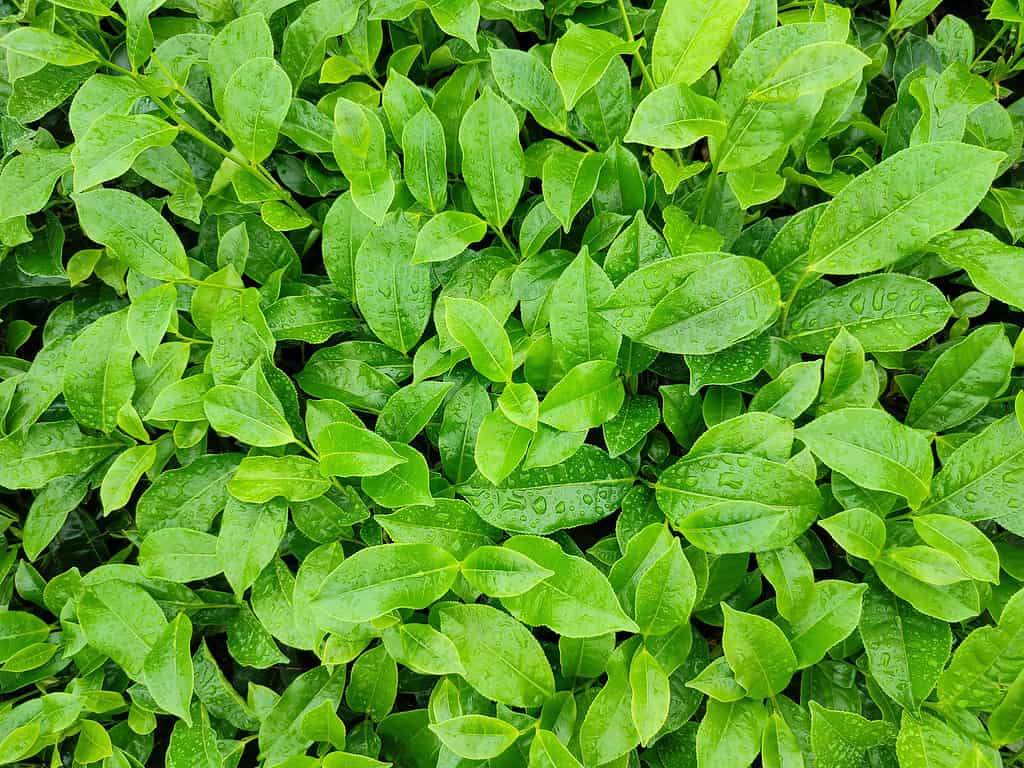
This is what your tea looks like before it’s harvested and dried.
©R. Haidy/Shutterstock.com
The tea plant (Camellia sinensis) is so called because it’s used to make a majority of the teas you know including green, white, yellow, oolong, and black tea.
2. Fennel
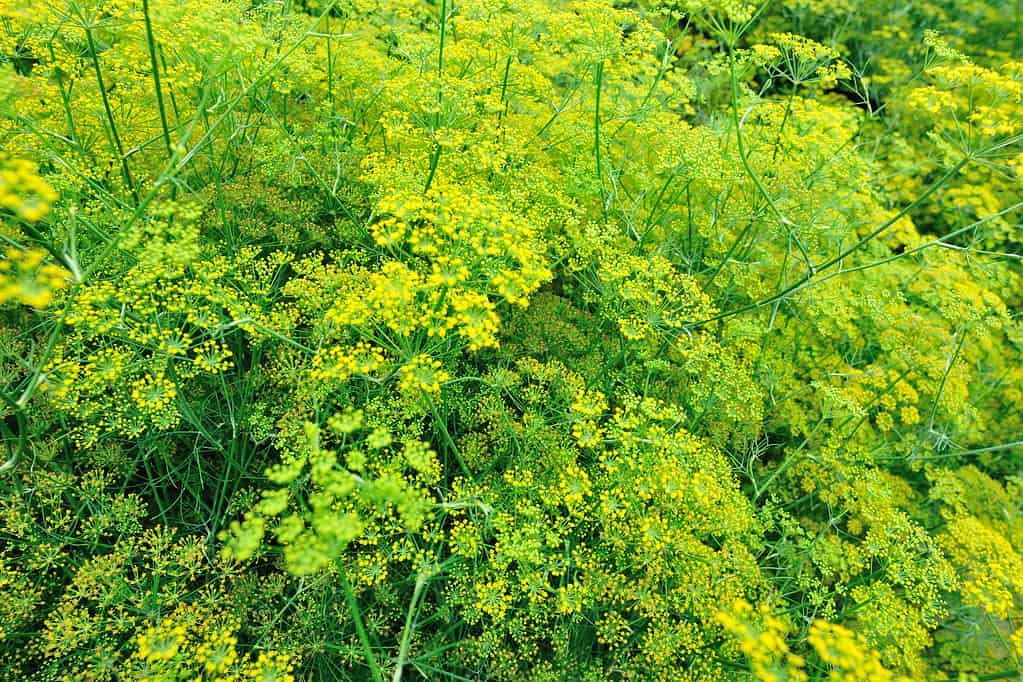
Fennel plants make for tea to help your gut.
©lzf/Shutterstock.com
Two types of fennel work well in tea, common fennel, and bronze fennel. They are antimicrobial and antiviral.
3. Fenugreek
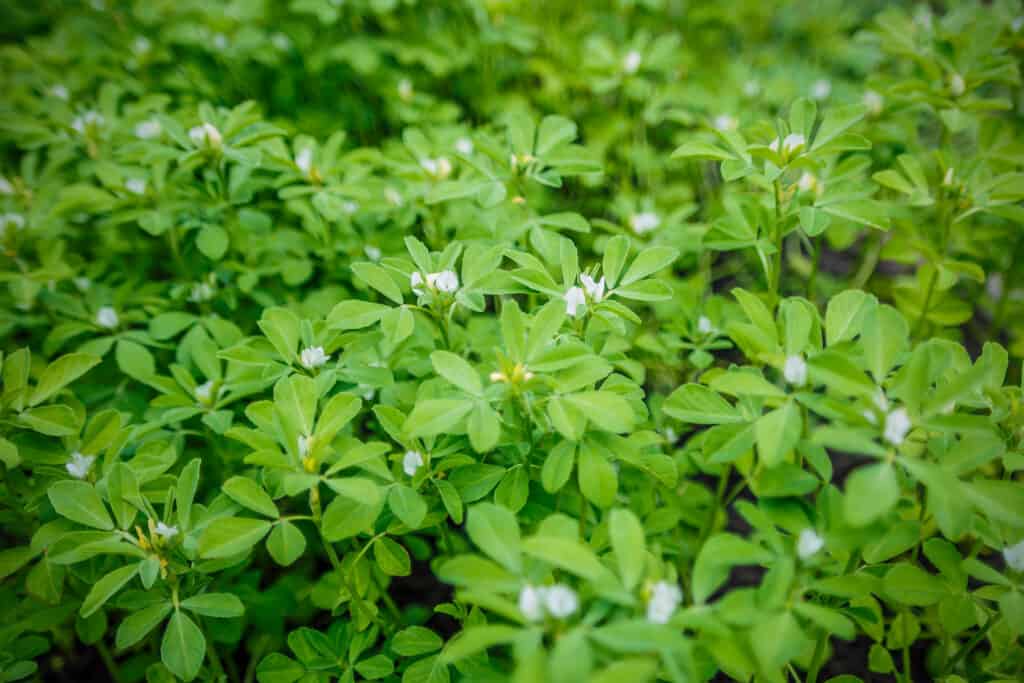
Fenugreek grows in fields and gardens easily.
©Akimov Konstantin/Shutterstock.com
This plant is often associated with certain cuisines, but fenugreek has a beautiful balance of bitter and sweet that makes it a delectable tea.
4. Cilantro
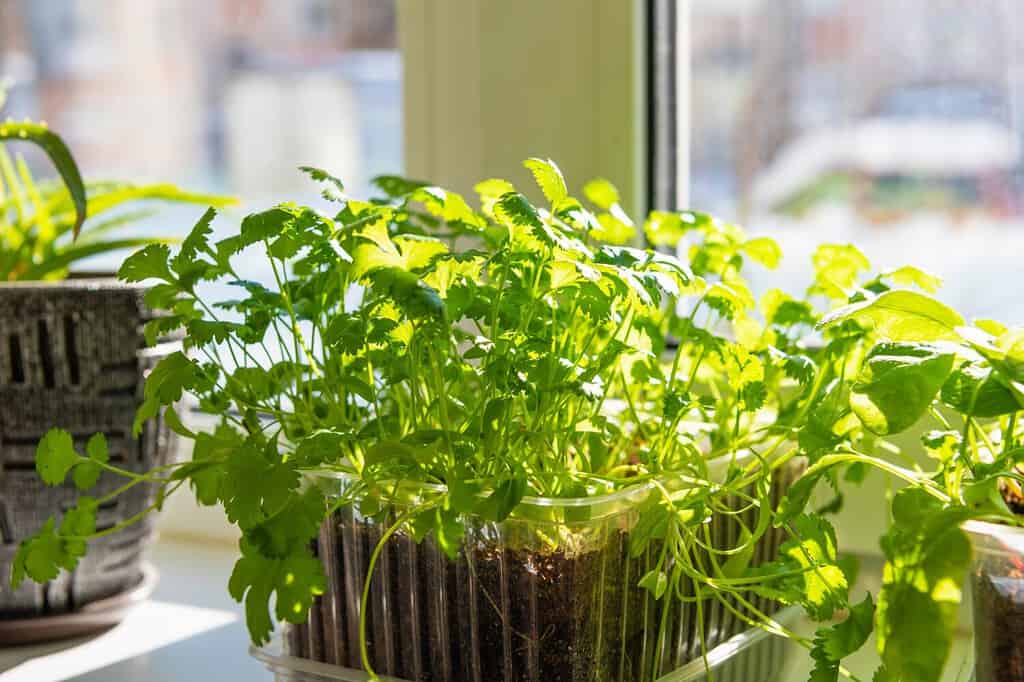
Cilantro works in a garden or a pot in your home.
©Valeriia Duggan/Shutterstock.com
When growing cilantro, you get both a delicious food topping and a tea that can help with blood sugar and cholesterol levels.
5. Chicory
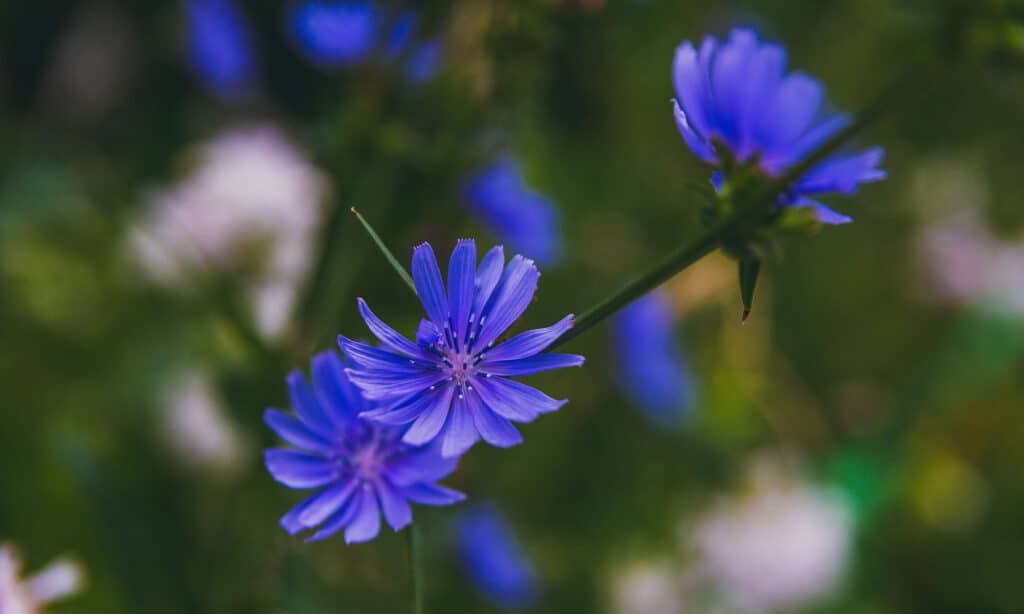
Chicory has gorgeous blue flowers perfect for any garden.
©marina_eno1/Shutterstock.com
If you’re trying to move away from coffee, chicory has a similar flavor profile and many health benefits. Plus, you can easily grow it in your garden, unlike coffee.
6. Dandelion
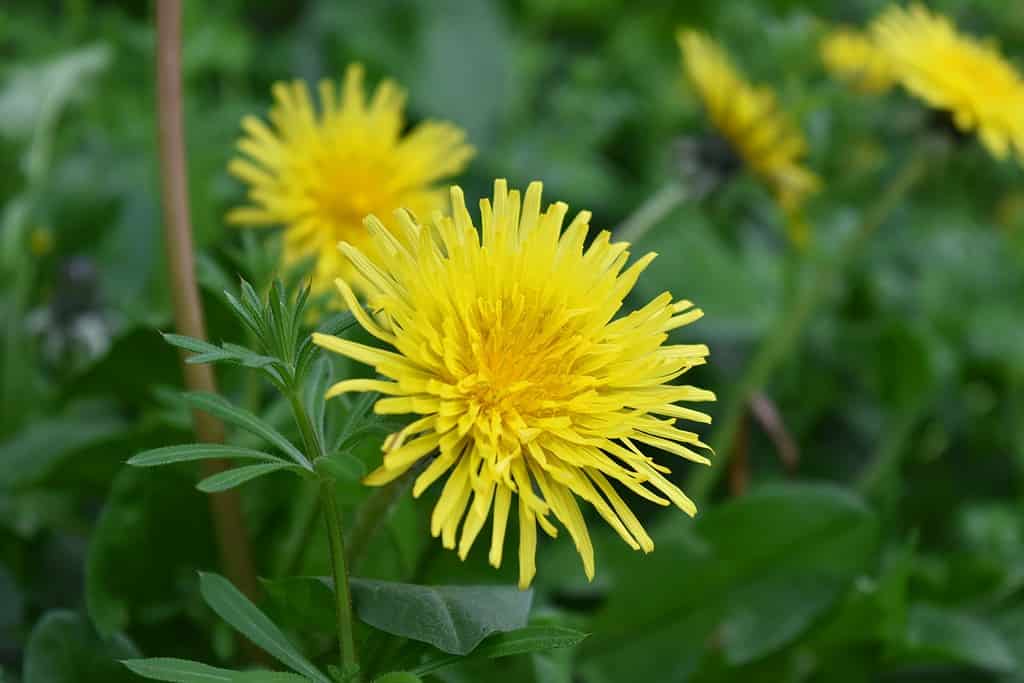
These plants may be considered weeds, but they can be used as food or tea.
©Ian Lycett-King/iStock / Getty Images Plus via Getty Images
Dandelions are a plant you don’t even have to try to grow. They pop up in most yards naturally. Instead of fighting to eliminate this plant from your yard, consider using it to make a drink or a salad.
7. Echinacea

Echinacea is a flower you’ll find often in teas for colds and sore throats.
©Lillusion/Shutterstock.com
If you’ve got a cold or sore throat, don’t look any further than echinacea. But don’t go buy a bag of this tea, just make your own with plants from your garden.
8. Valerian

The flowers of this plant look gorgeous in any garden.
©Wirestock Creators/Shutterstock.com
The roots of the valerian plant make a delicious and nutritious tea. Don’t drink this tea if you’re pregnant or breast-feeding, or if you have liver disease.
9. Angelica
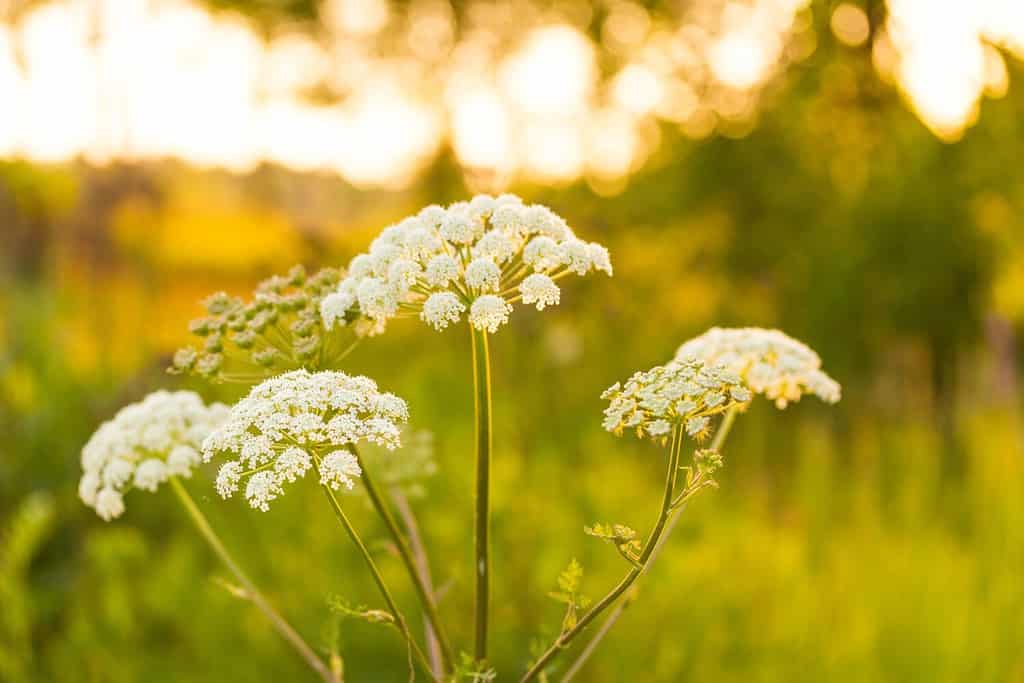
The roots of an angelica plant can help boost memory and even possibly help you quit smoking.
©alpictures/Shutterstock.com
If you like slightly bitter teas, you may want to try angelica root tea. It’s a blend of sweet and bitter, making for a rather pleasant drink.
10. Licorice
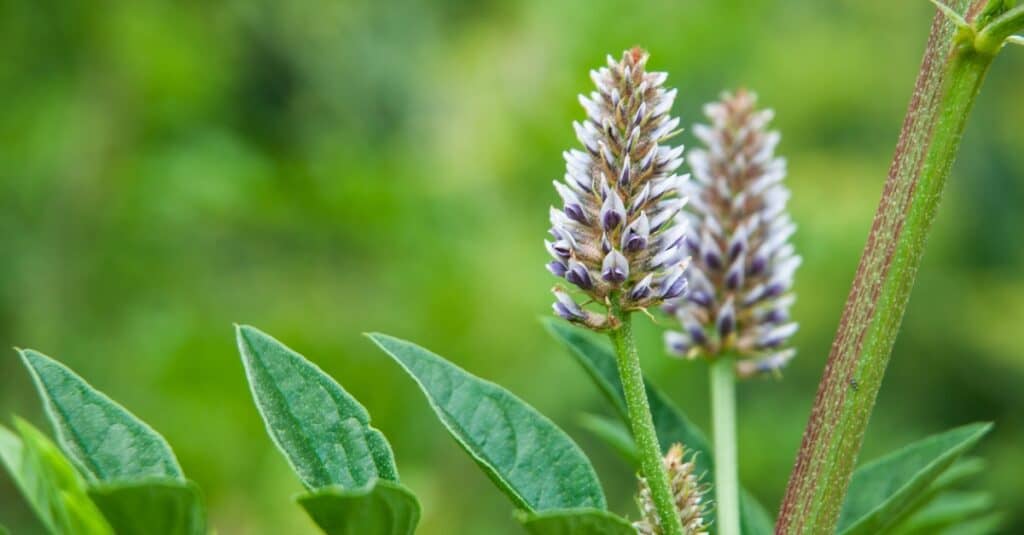
No, this isn’t the candy, but a plant that grows in many environments.
©iStock.com/Carmen Hauser
Licorice plants have many benefits, for those with digestion problems, menopause, or an infection. It can be taken as a lozenge or drank as a tea.
11. Ginger
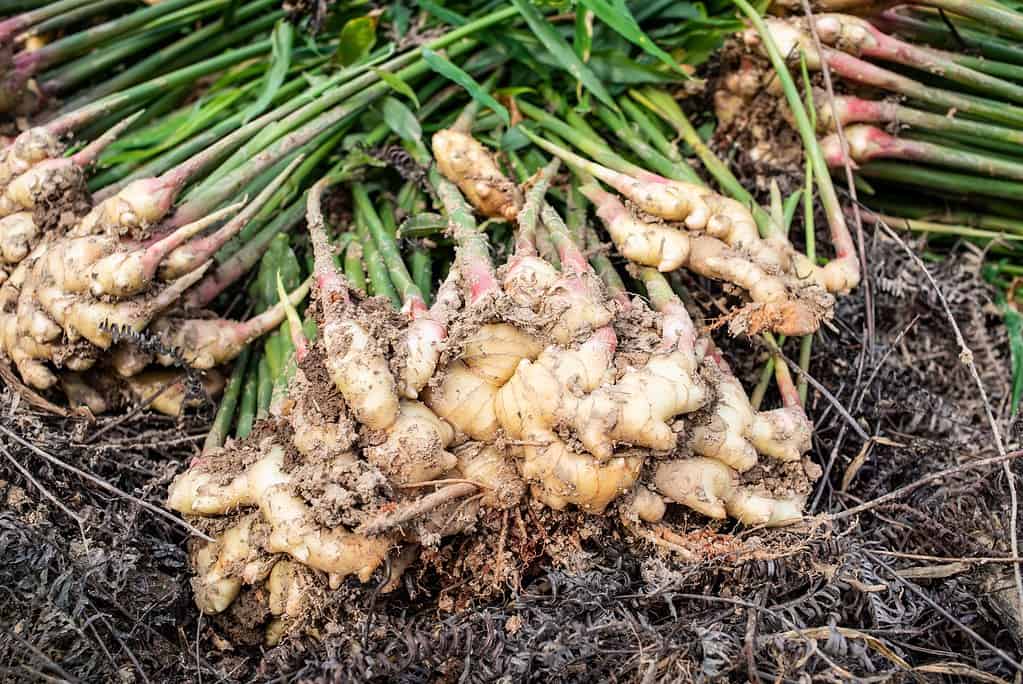
This spicy root is popular in Asian food and also makes an excellent tea.
©Lili.Q/Shutterstock.com
Ginger can grow just about anywhere. Even in the rare few areas it doesn’t grow best outside, it makes an excellent indoor plant.
12. Blueberry
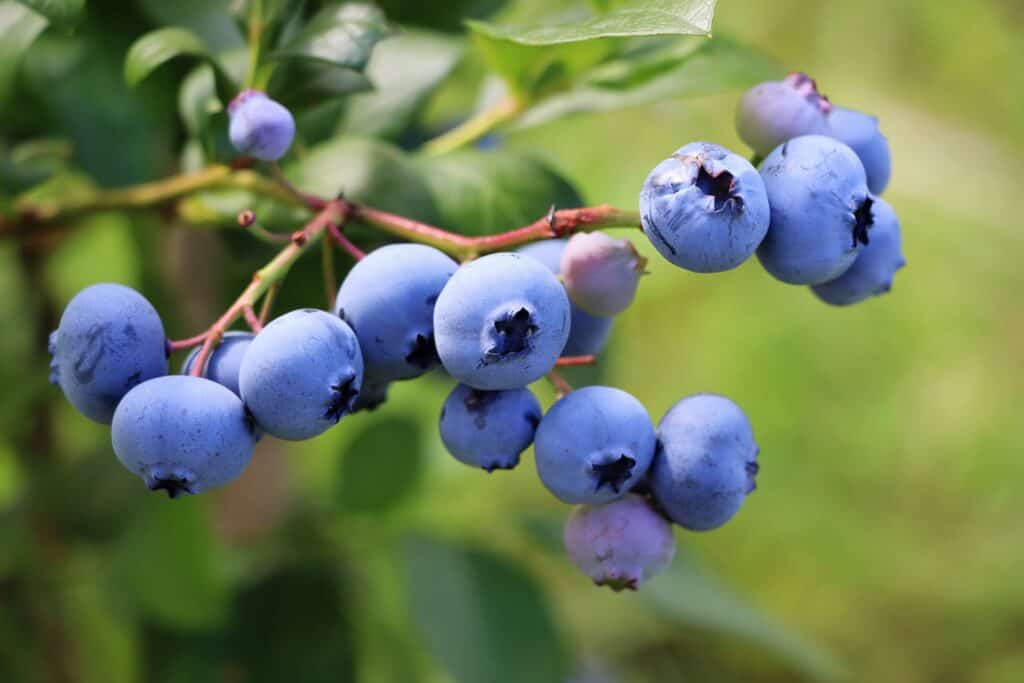
Blueberries are valued for their medicinal properties.
©vaivirga/Shutterstock.com
To make tea out of blueberries, you can dry the berries, and use the leaves (dried or fresh) or both. Drink them with a bit of sweetener or mix them into your favorite black tea for a boost of flavor and health benefits.
13. Peach
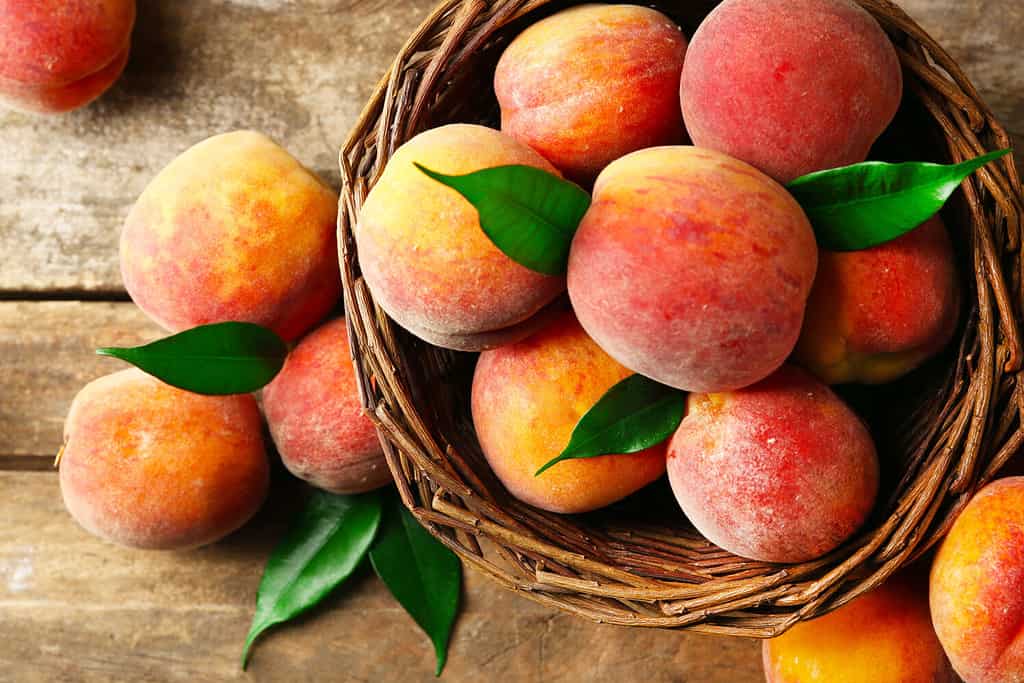
Peaches are delicious in pies, oatmeal, teas, and by themselves.
©Africa Studio/Shutterstock.com
Peach tea works well when blended with black tea, but also makes for a delicious and delicate caffeine-free iced tea by itself.
14. Apricot
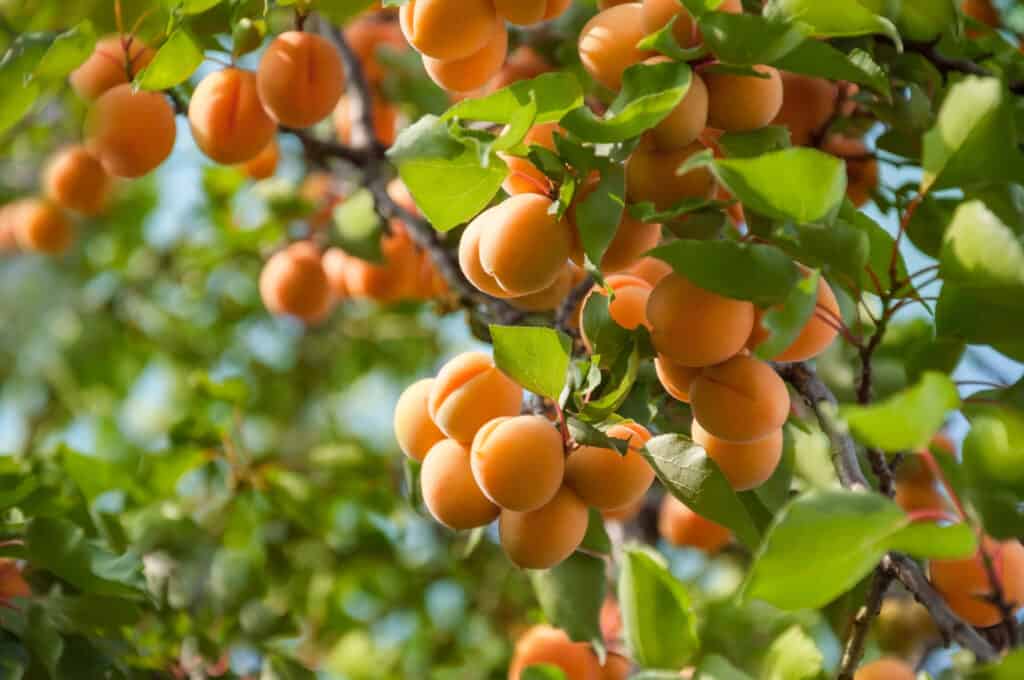
Apricots are similar in flavor to peaches, without the fuzzy skin.
©iStock.com/Zoya2222
If you want a bright, cool drink for the summer, blend apricots with a splash of lemon and sugar. It also works paired well with other flavors like peach or mango.
15. Mango
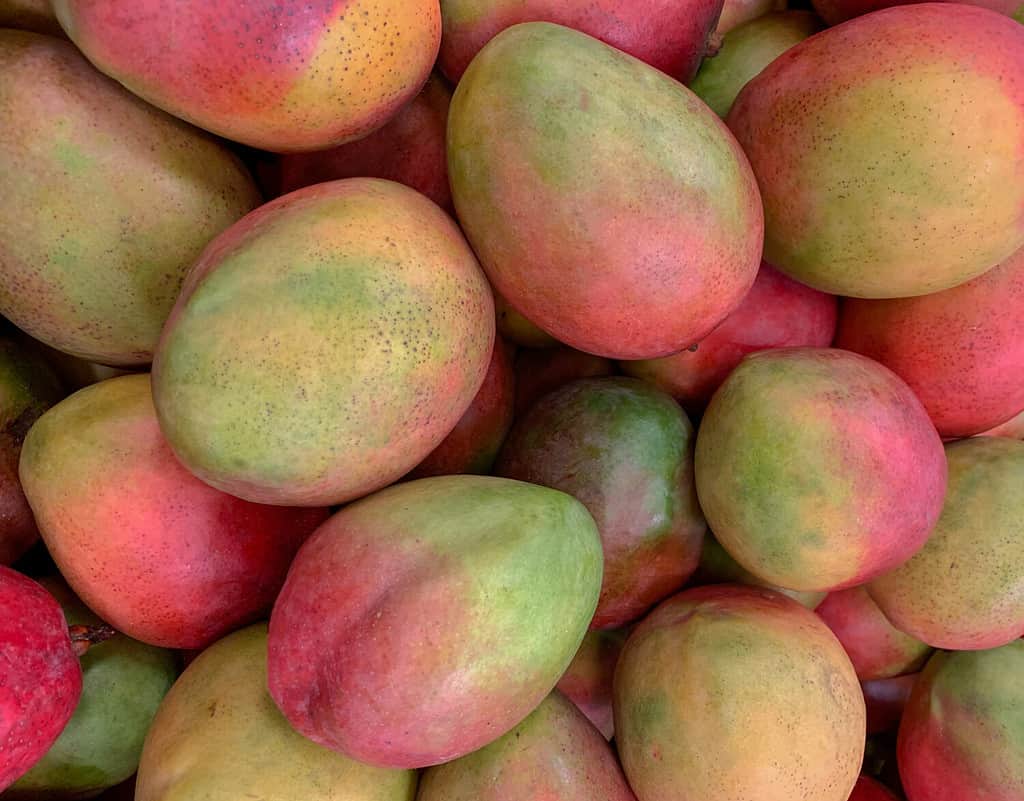
As a tropical fruit, you may not have realized that you can grow mangoes of your own.
©Rosamar/Shutterstock.com
Mango tea can be thick, where you just blend and strain the fruit with some sugar and lemon juice. Or, you can dry the fruit and make your black tea a little more tropical.
16. Lemon

Lemon in tea has more health benefits than lemon in water.
©Africa Studio/Shutterstock.com
A squeeze of lemon adds a bit of brightness to every cup of tea. While a drink consisting fully of lemon might be a little tart, a squeeze of lemon or some rind in any glass gives you extra health benefits and a burst of flavor.
17. Rose

Roses are pretty, make for beautiful decorations, and add a floral punch to most tea pairings.
©Yevheniia Yasenenko/iStock via Getty Images
You may think roses are just good to add a little color to your home, but they have a lot of health benefits. Use either rose petals or rose hips in your tea to boost your immune system.
18. Strawberry

Strawberries might not actually be berries, but they are delicious.
©V_Sot_Visual_Content/Shutterstock.com
If you like fruity flavors in your tea, a couple of pieces of dried strawberry can make all the difference. The fruity and sweet taste can bring flavors to most teas.
19. Myrtle
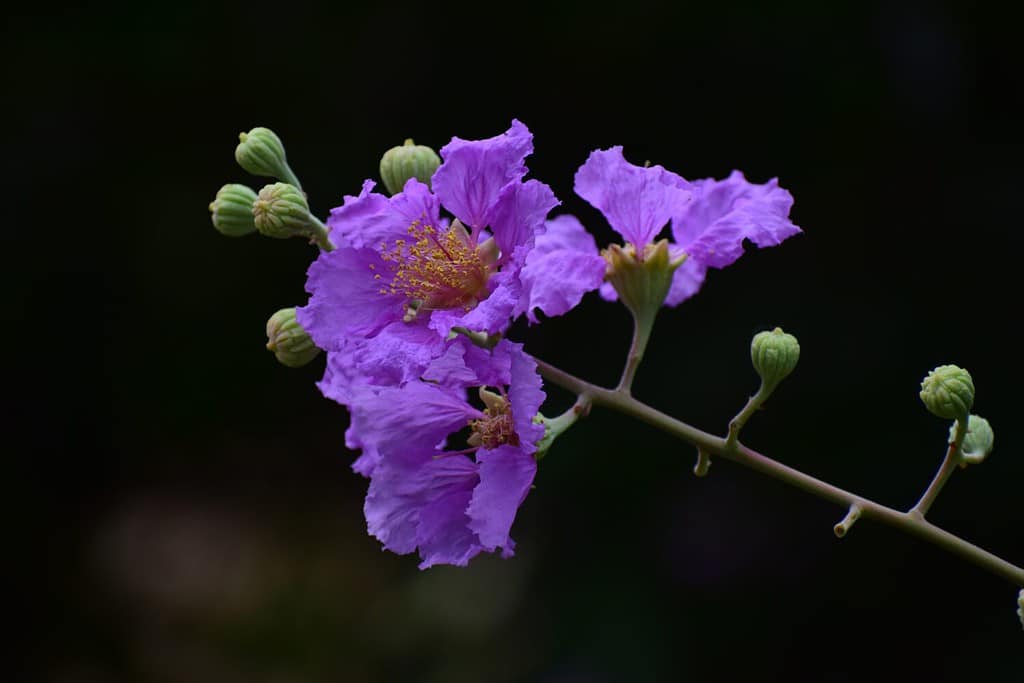
Myrtle is a gorgeous plant to put in any yard.
©Manas Mistry/Shutterstock.com
If you want to make a bright tea, a bit of lemon myrtle mixed with strawberries and lemongrass is sure to impress. While other myrtles can be used, lemon myrtle is the most common.
20. Blackberry
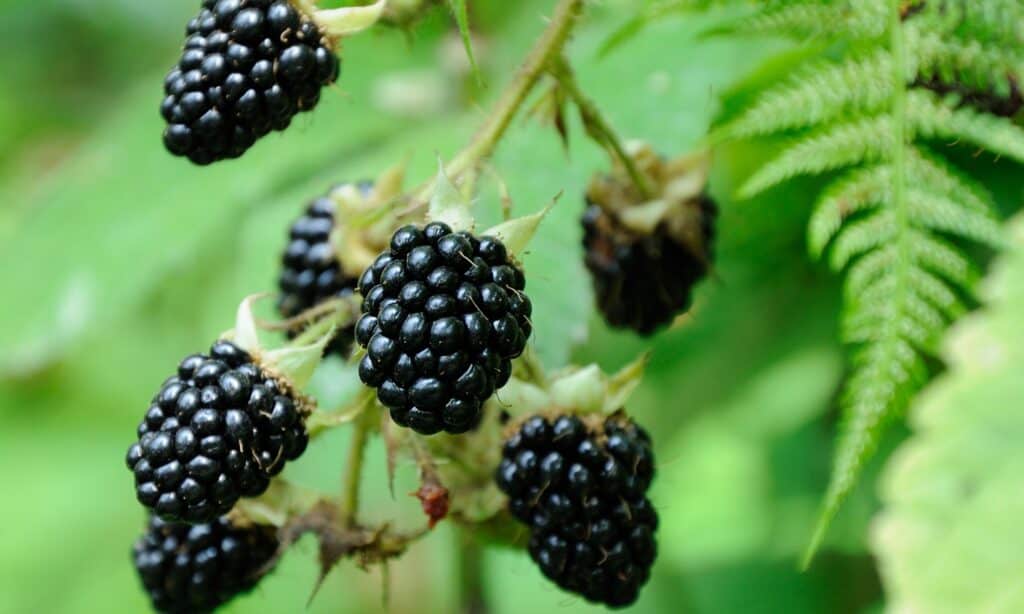
Blackberries are the perfect summer fruit.
©iStock.com/syaber
There are many health benefits to drinking blackberry tea, including improving skin health and reducing the chances of chronic disease.
21. Chamomile

Chamomile is a popular and mild flavor.
©Shan 16899/Shutterstock.com
There are many different chamomile teas that you can buy, but why not make your own with the chamomile flowers?
22. Honeysuckle

For a tea as sweet as its name, give honeysuckle a try.
©lenic/Shutterstock.com
There aren’t many plants out there as colorful and eye-catching as a honeysuckle. Pair that with their ability to make flavorful tea, and you have a clear winner for your next garden plant.
23. Jasmine

Jasmine smells amazing and creates a healthy and flavorful tea.
©Nick Pecker/Shutterstock.com
When it comes to using jasmine as one of the best plants to grow for tea, two species are commonly used, the sampaguita and the common jasmine.
24. Lavender

Dried lavender adds a floral and minty taste to your favorite tea blends.
©Ulrike Leone/iStock / Getty Images Plus via Getty Images
Lavender is a great plant to throw in your tea when your stomach doesn’t want to work with you. It also adds a pleasant floral smell to a cup of tea.
25. Saffron

Saffron is expensive, so why not grow your own?
©ZhakYaroslav/Shutterstock.com
The stigmas from the saffron plant can be added to food for flavor, or thrown into tea for a boost to your memory.
26. Violet
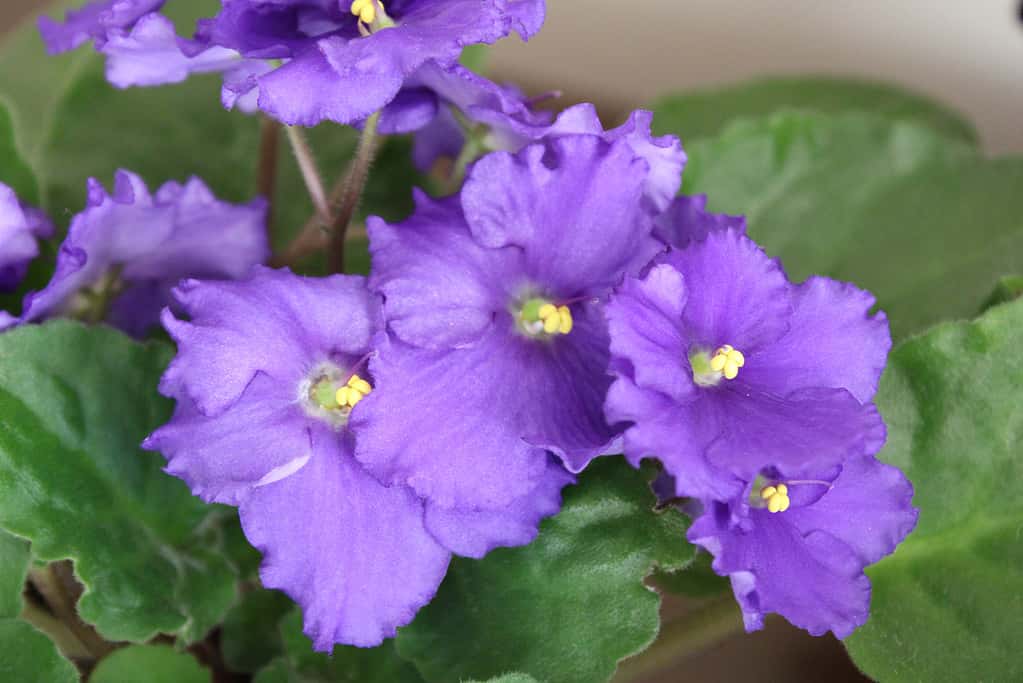
Though called violets, these flowers come in many shades of pink and purple.
©Abdulkadir ARSLAN/iStock via Getty Images
Violets make for a delicious tea or lemonade that’s fresh and floral. Just dry out the leaves and crumble them into your drink.
27. Almond
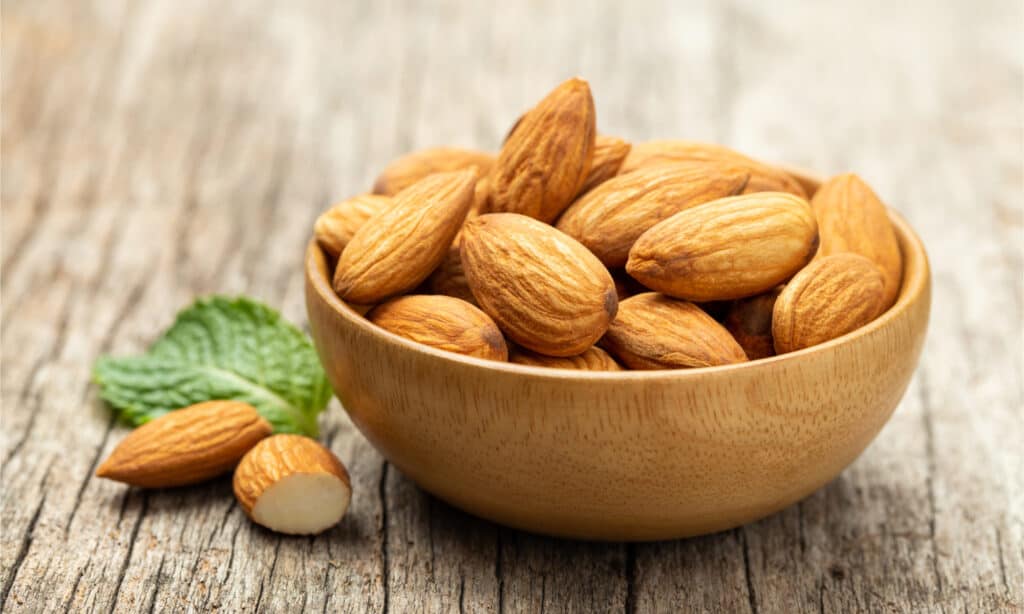
Almonds are a healthy and beneficial nut.
©suriya yapin/Shutterstock.com
When chopped up and thrown into tea, almonds add a nutty, sweet taste. You can add them to a black tea for a boost of flavor, or make a light tea with just the almonds.
28. Cardamom
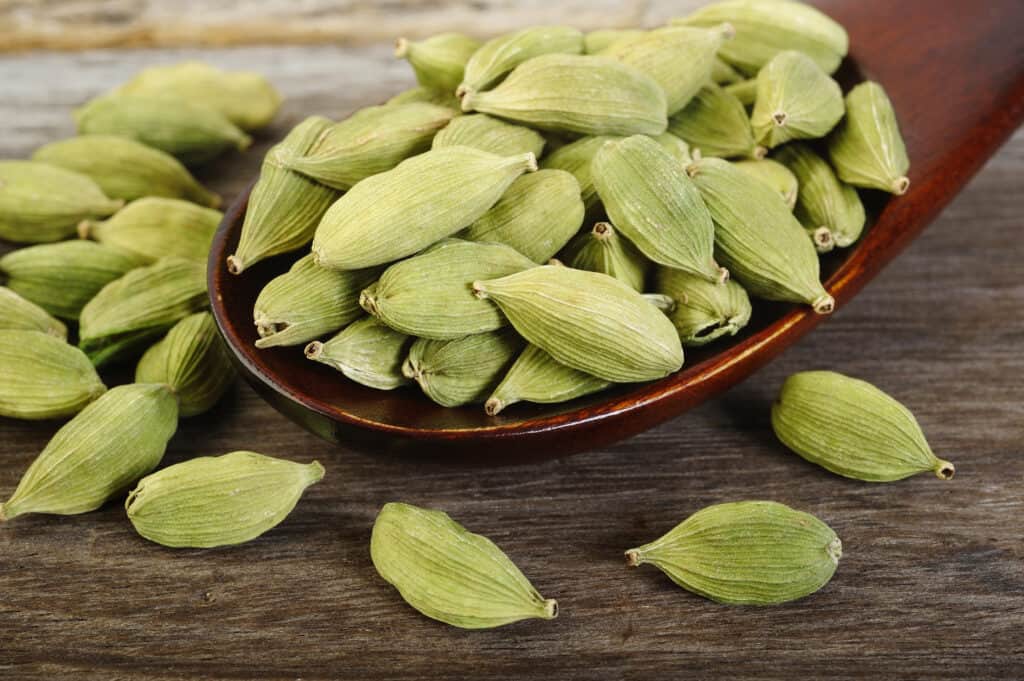
Green cardamom pods are one of the spices used to make chai.
©jeehyun/Shutterstock.com
If you want, cardamom is part of the spices needed to make chai, but they can be broken up and used by themselves in tea as well for a less spicy drink.
29. Feverfew
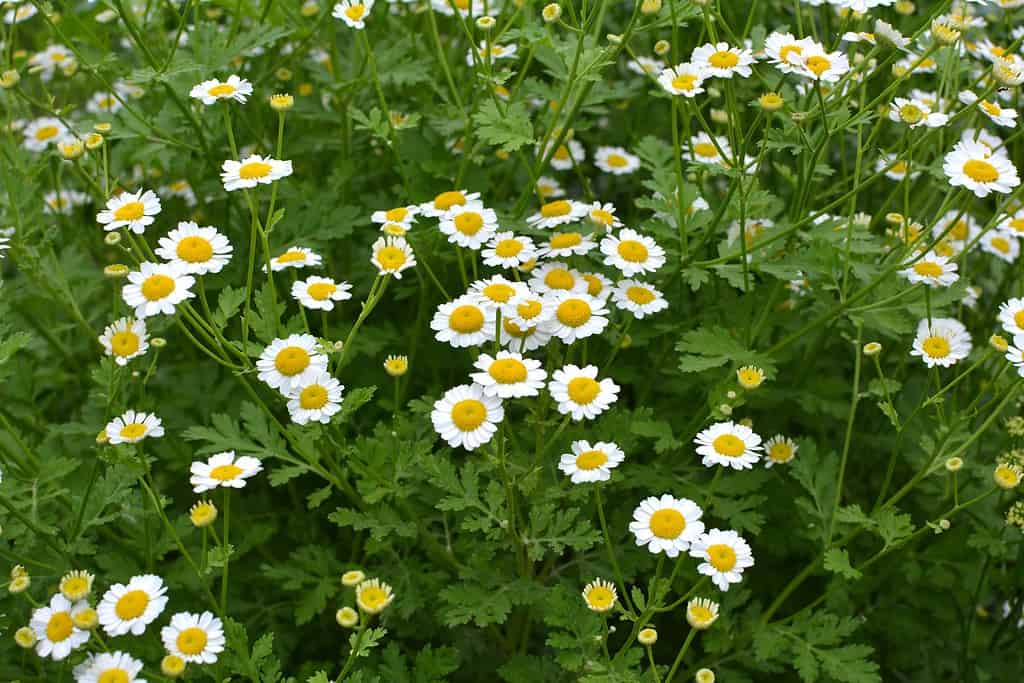
Feverfew looks a lot like daisies or chamomile.
©Orest lyzhechka/Shutterstock.com
If you have constant headaches, feverfew tea is nice to keep around. Take a few dried flowers and add them to hot water for quick relief.
30. Hyssop
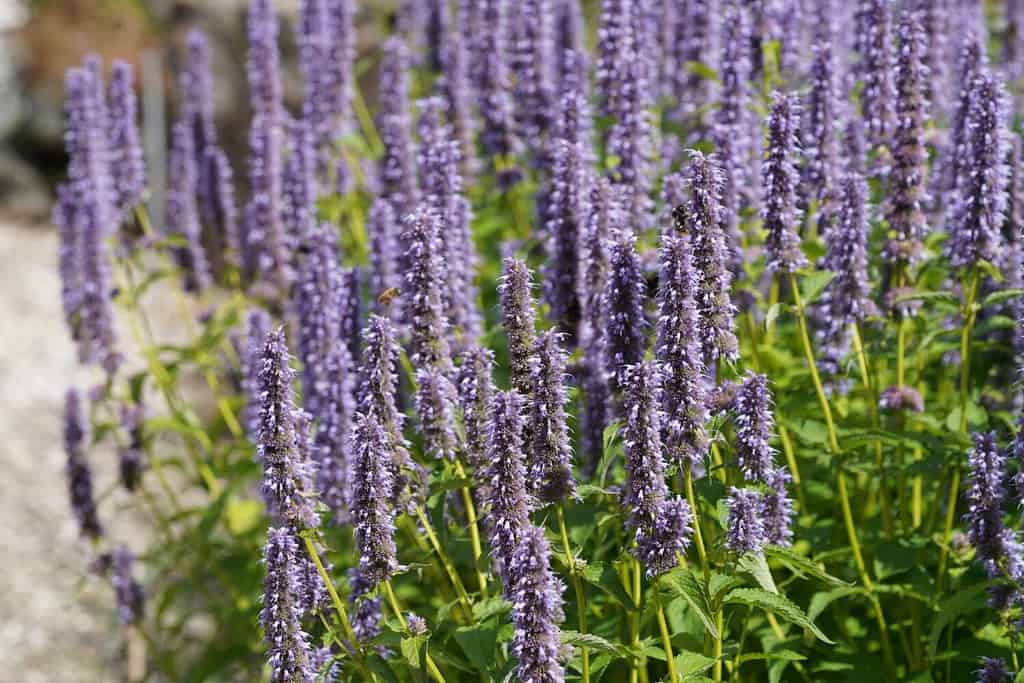
Hyssop looks a lot like lavender and tastes fairly similar too.
©Doikanoy/Shutterstock.com
There are a few different forms of hyssop that you can use to make a delicious tea that will stop a cough.
31. Anise
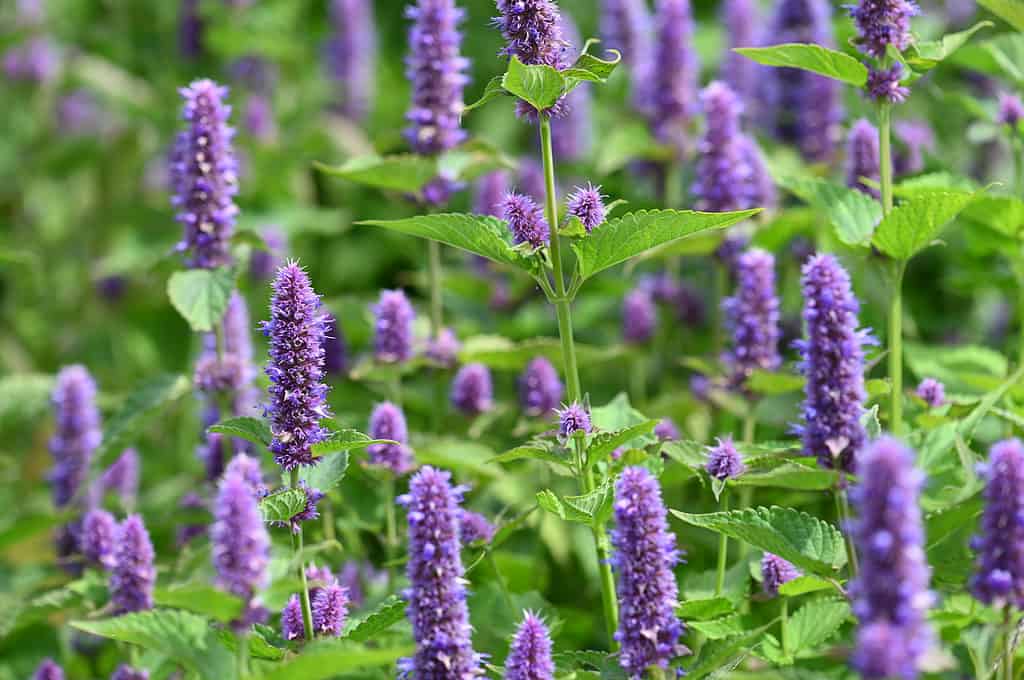
The anise hyssop is a plant in the mint family and one of the major attractions for pollinators.
©iStock.com/BethAmber
Anise is another plant that looks, tastes and smells similar to lavender. It improves the immune system and your skin.
32. Lemon Balm
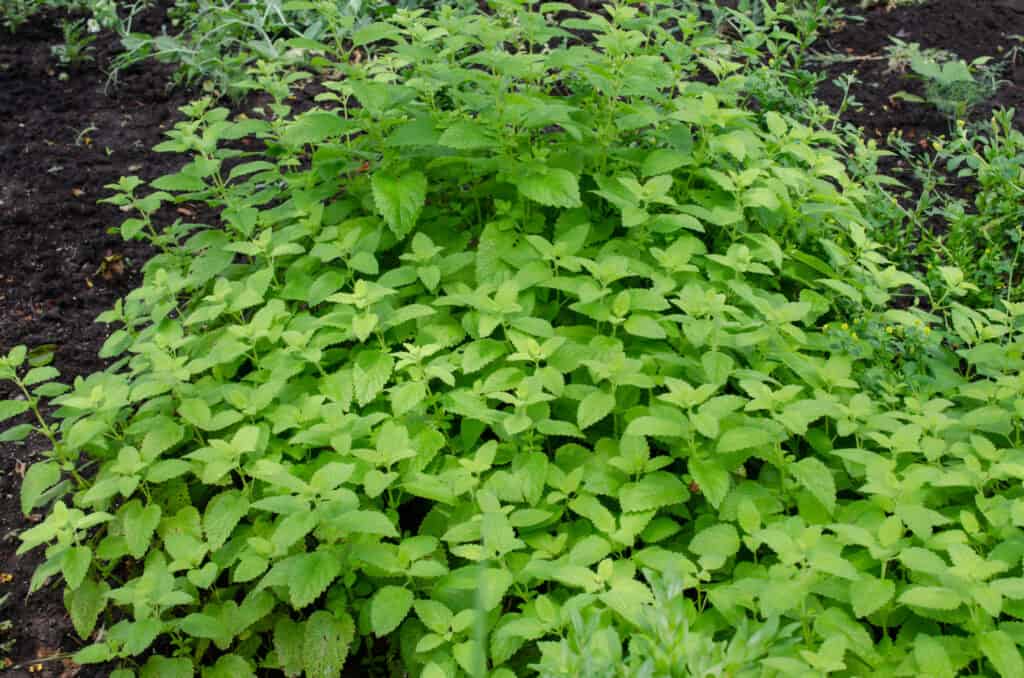
Lemon balm makes any garden look like a cute cottage garden in the forest.
©iStock.com/Allchonok
As the name suggests, lemon balm is part of the mint family with a lemony brightness.
33. Manuka
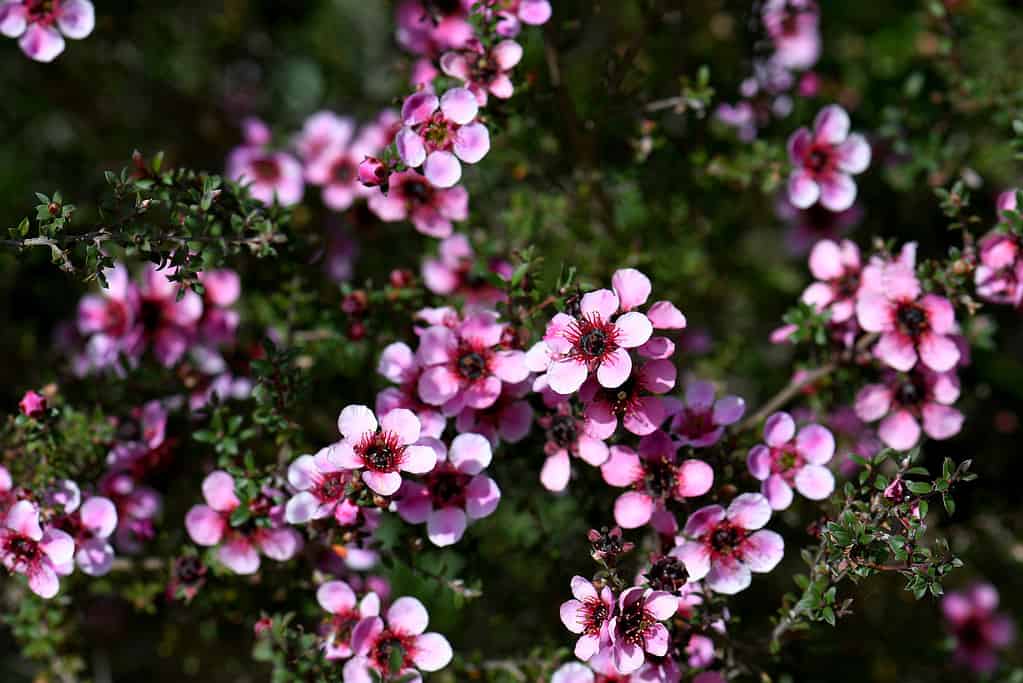
These pretty flowers are found in Australia naturally but can be grown elsewhere with enough care.
©KarenHBlack/iStock via Getty Images
Manuka is a flower often used to make delicious honey. Its flavor also works wonderfully in tea.
34. Bergamot
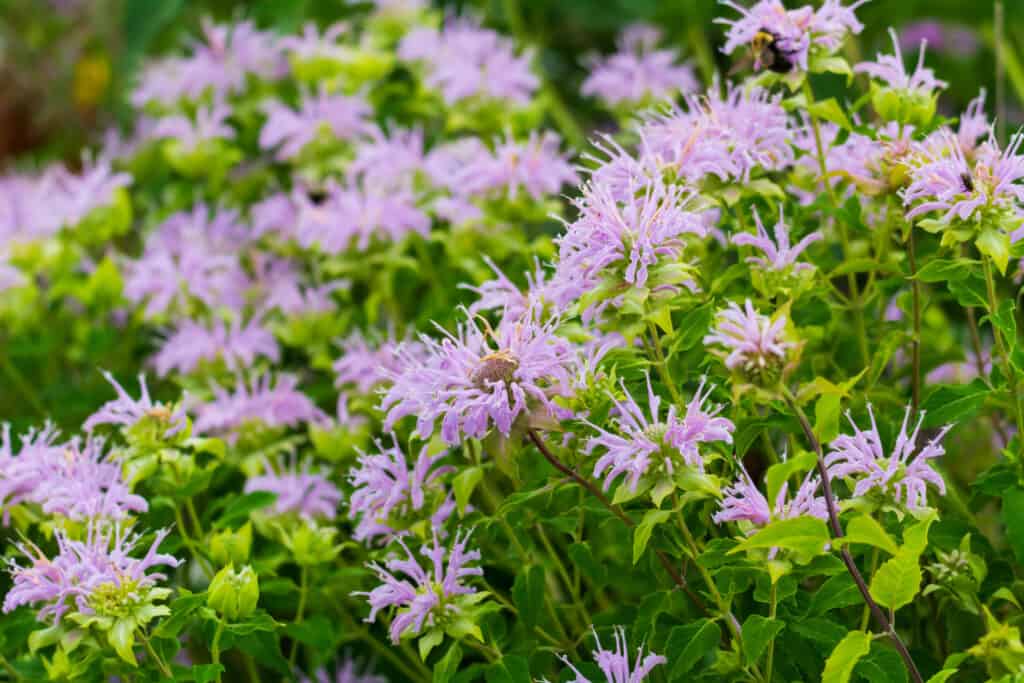
Wild bergamot usually grows up to 3 feet tall.
©James W. Thompson/Shutterstock.com
If you want to start a bee garden, have a plant that smells nice, and a tasty tea, you need bergamot. It’s a plant often used in candles, perfumes, and incense sticks.
35. Nasturtium
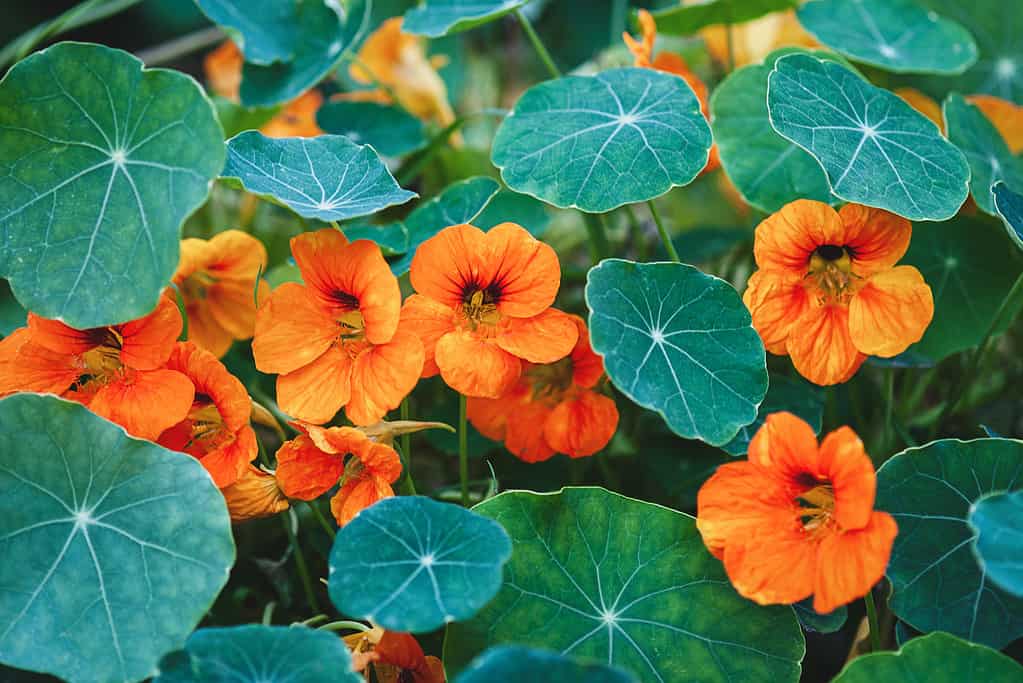
All parts of the nasturtium except the roots are edible.
©Nadya So/iStock / Getty Images Plus via Getty Images
Nasturtiums can be drank as tea but it does have a somewhat unique flavor.
36. Clover
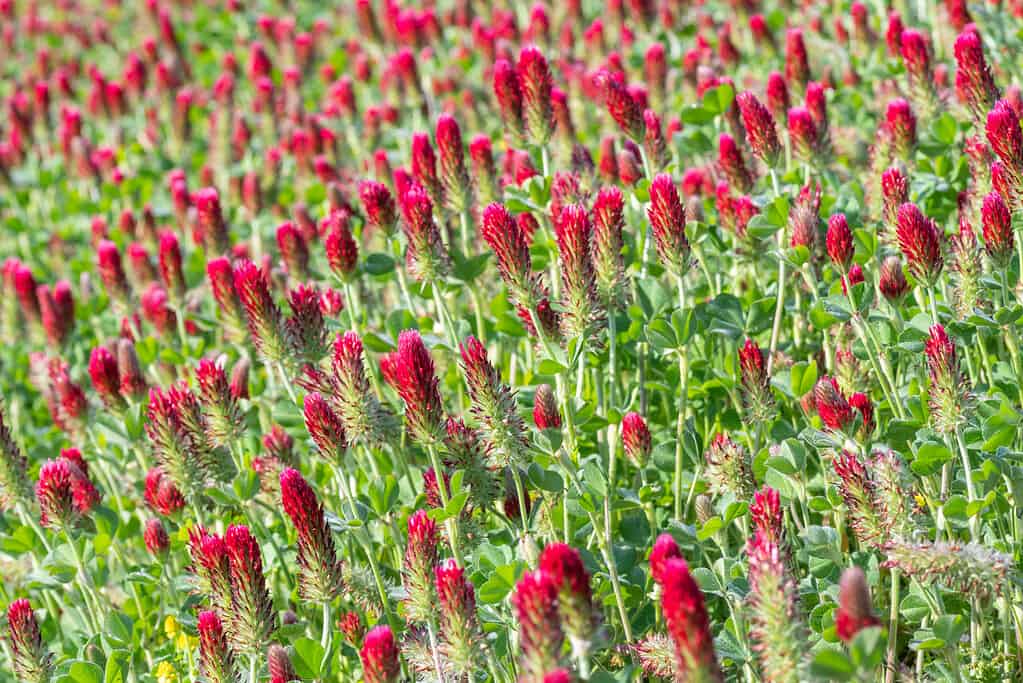
A field of blooming crimson clover makes for quite a sight.
©Marianne Pfeil/ via Getty Images
Clover makes great ground cover in place of grass, and you can turn it into tea!
37. Dahlia

These flowers come in all sorts of color combinations, making them one of the best plants to grow that fits your garden and makes unique tea.
©jessicahyde/Shutterstock.com
Dahlias are gorgeous flowers that will make anyone jealous and you can toss the drying flowers into tea when the season’s over.
38. Catnip
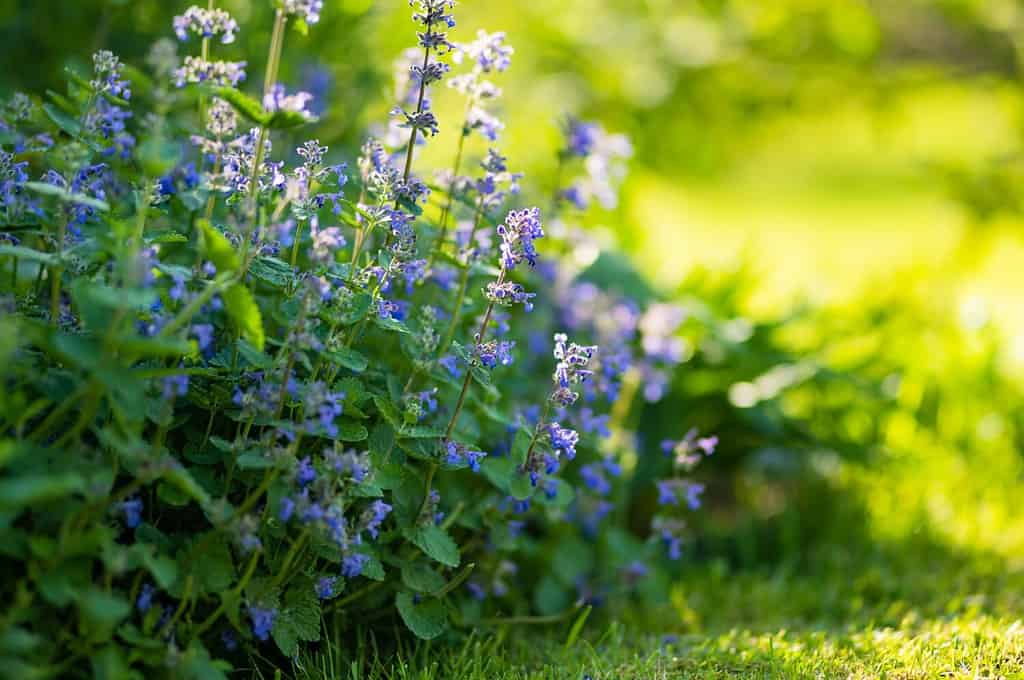
While catnip can make your cat go crazy, it’s also a cute plant to have around.
©MNStudio/Shutterstock.com
Catnip is a useful plant to have around for your cat and to boost your health with a bit of it in your cup of tea.
39. Dianthus

Dianthus are breathtaking flowers.
©iStock.com/Iva Vagnerova
If you want a hardy flower for tea that can handle your not-so-green thumb, you need a dianthus.
40. Pine

Depending on where you live, you likely already have this tree near your home.
©Mark Kostich/iStock via Getty Images
Pine needles can be steeped in hot water to make a unique tea with many health benefits.
41. Juniper
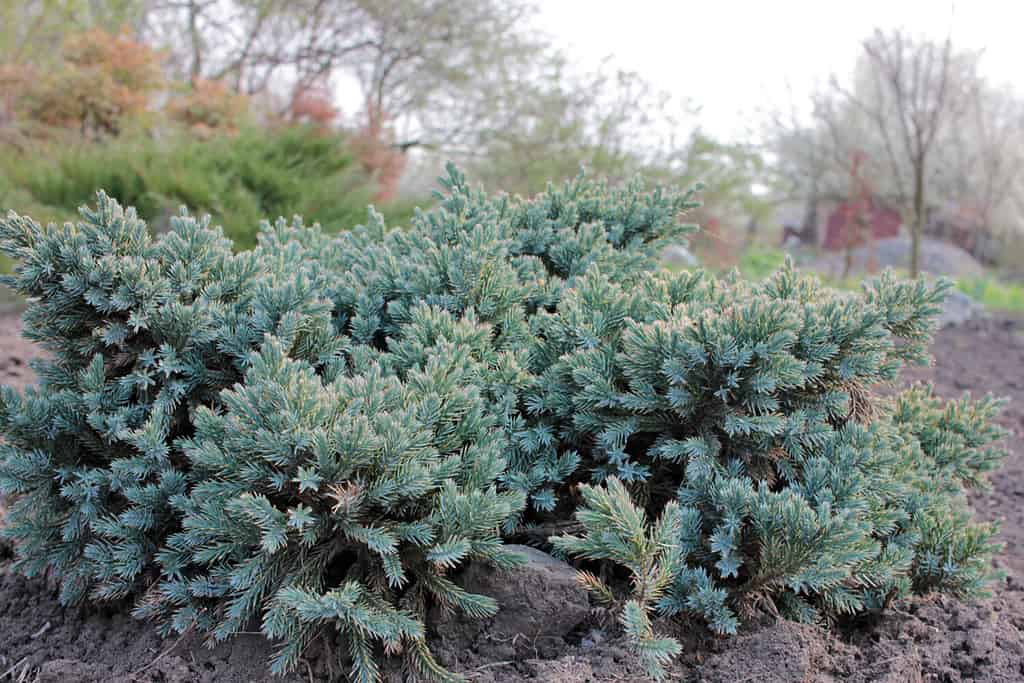
Juniper is another plant naturally found in many areas.
©Juver/Shutterstock.com
The berries of the juniper plant can be used to make gin or tea. It tastes somewhat similar to pine.
42. Passion Flower
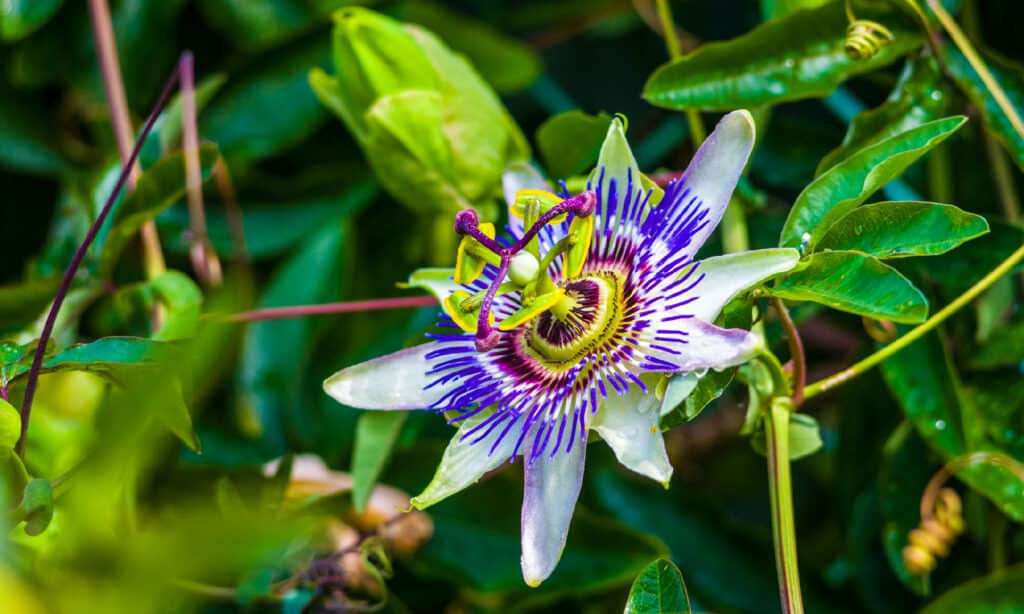
These beautiful flowers contain many health benefits when drank as a tea and it’s beautiful, making it one of the best plants to grow in your garden.
©iStock.com/Shedu
Passion flowers are said to help you go to sleep if you drink them in tea before bed.
43. Basil
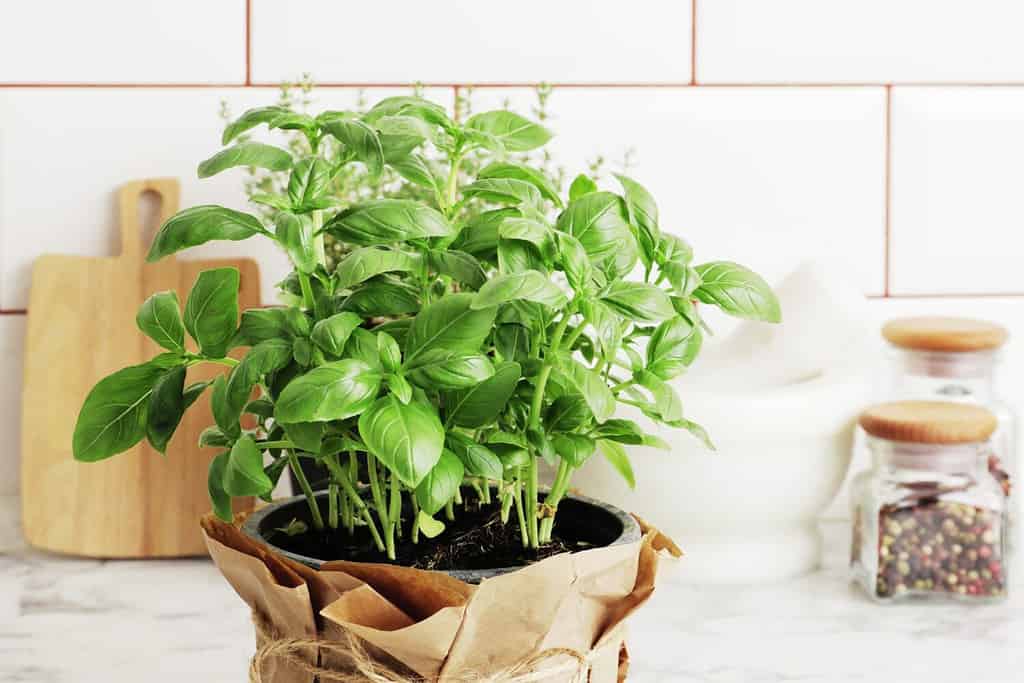
Basil is easy to grow and care for.
©PandaStudio/Shutterstock.com
The most popular basil for tea is holy basil, but you can try any kind and see if you like the flavor.
44. Lemon Verbena

Lemon verbena flowers are subtle and won’t steal the show from your other plants.
©ChWeiss/Shutterstock.com
When looking at the best plant to grow for tea, lemon verbena is a choice for those who like bright, citrus notes.
45. Nettle
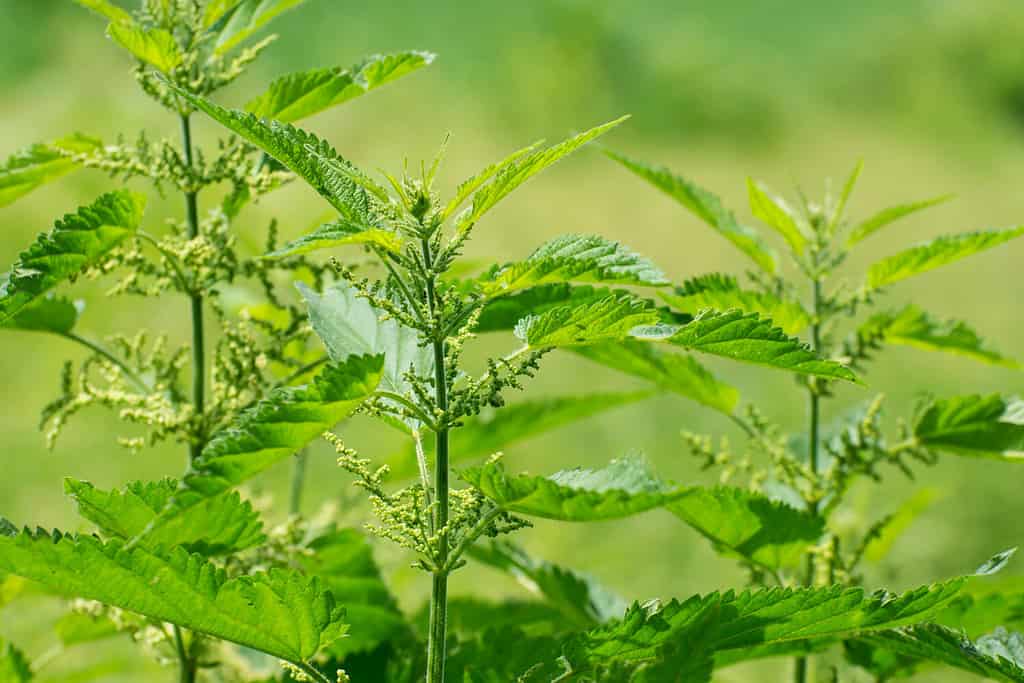
Nettles may be painful, but they are full of nutrients.
©IhorM/Shutterstock.com
You may not think that nettles are one of the best plants to grow in your garden, but the tea is quite delicious and nutritious.
46. Sunflower

Sunflowers produce sunflower seeds and big petals perfect for brewing tea.
©Pablesku/Shutterstock.com
If you want bright, large flowers in your garden, sunflowers are one of the best plants to grow in your yard. You get delicious sunflower seeds and tea.
47. Milk Thistle
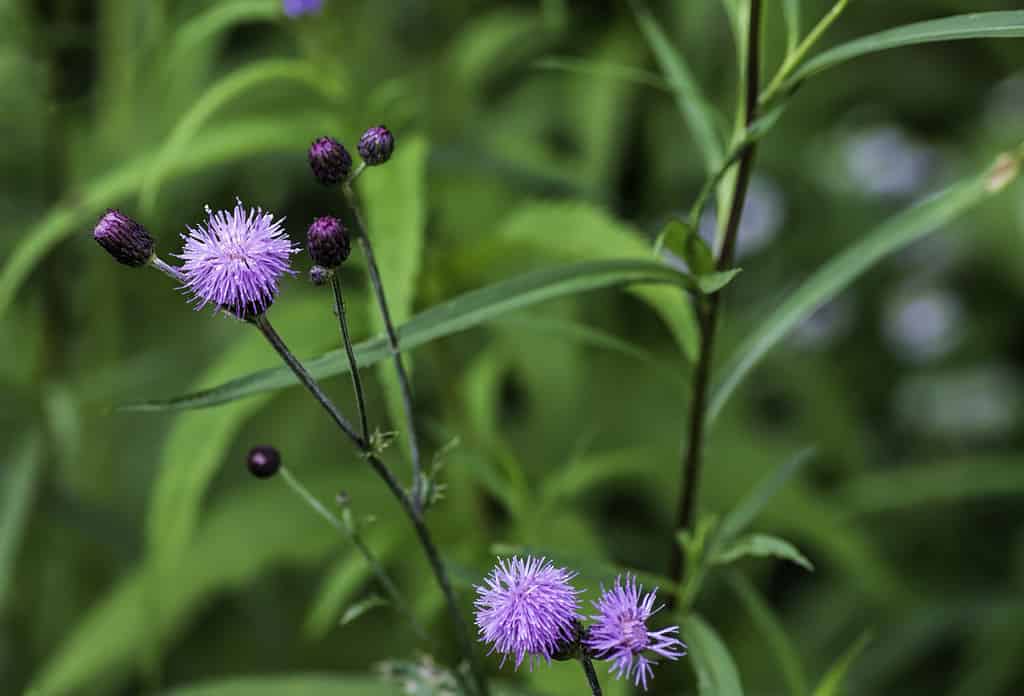
Thistles are annoying but great to grow in a natural garden due to their numerous benefits.
©LesPalenik/Shutterstock.com
Milk thistles are said to be useful for some major health problems like hepatitis and cirrhosis.
48. Mint
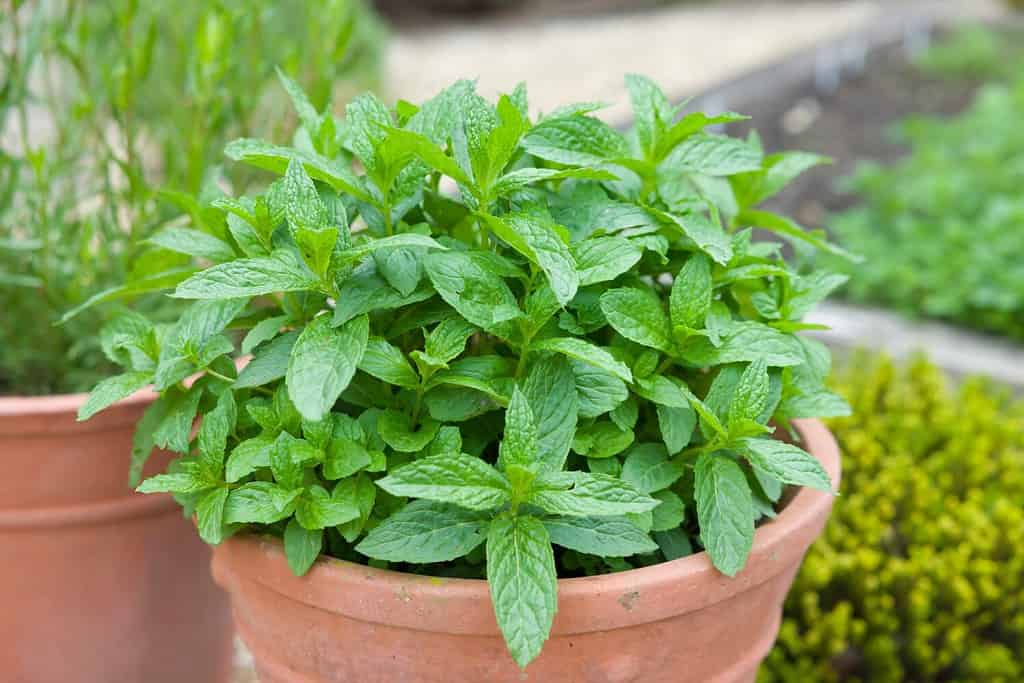
There are many different colors and types of mint out there.
©Paul Maguire/Shutterstock.com
There are hundreds of different species and variations of mint in the world. Almost all of them make delicious tea with subtle flavor differences.
49. Mountain Pepper

Mountain pepper is an evergreen shrub that will keep your garden looking green all year long.
©PairachCh/iStock via Getty Images
The berries from the mountain pepper plant have been used for centuries as a tea.
50. Marjoram
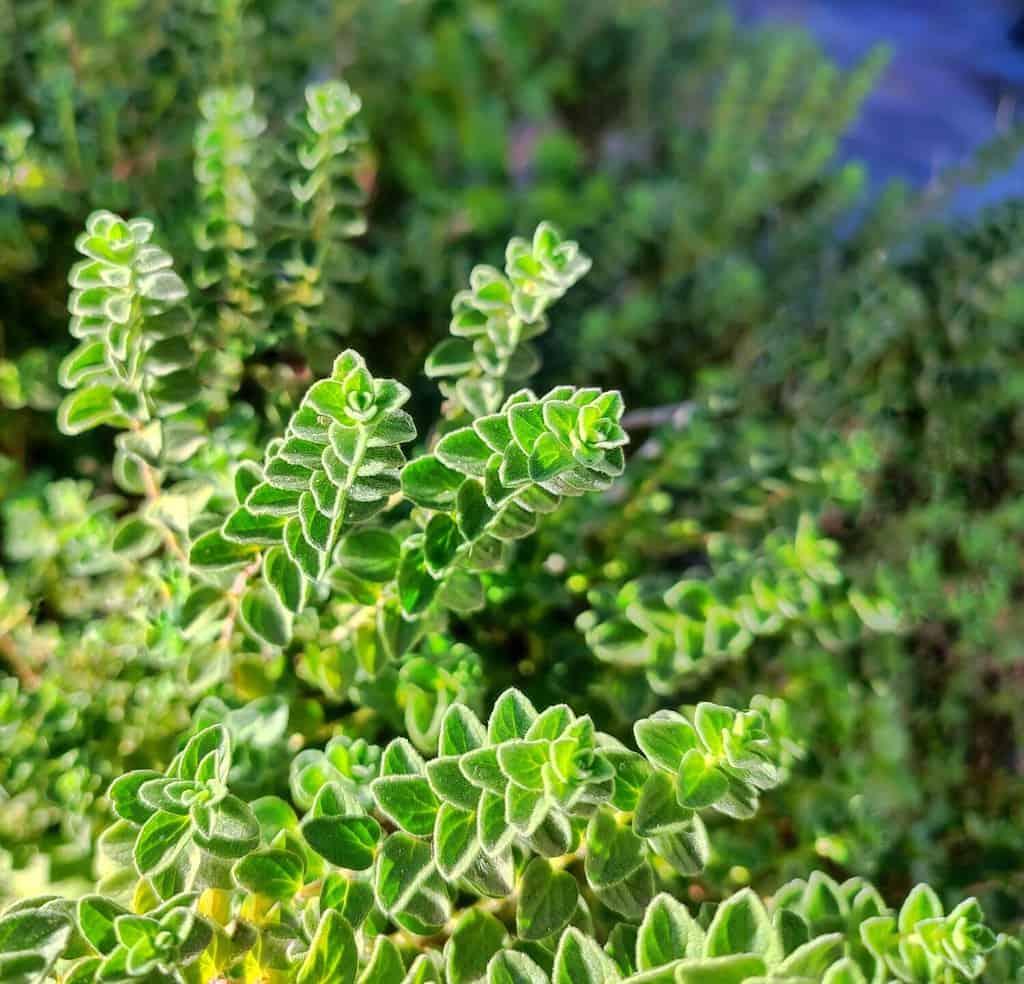
Sweet marjoram is a plant that is sweet and herbaceous in tea.
©The_AA’s/Shutterstock.com
Technically related to oregano, marjoram is the best plant you never thought about making tea with.
51. Olive Tree

Olive trees are not hardy and will need to be moved inside during winter and brought back out after the last freeze date if you live somewhere cold.
©jessicahyde/Shutterstock.com
If you like olives and trying new flavors of tea, an olive tree provides you the best of both worlds. Don’t worry, the drink won’t taste like olives.
52. Raspberry
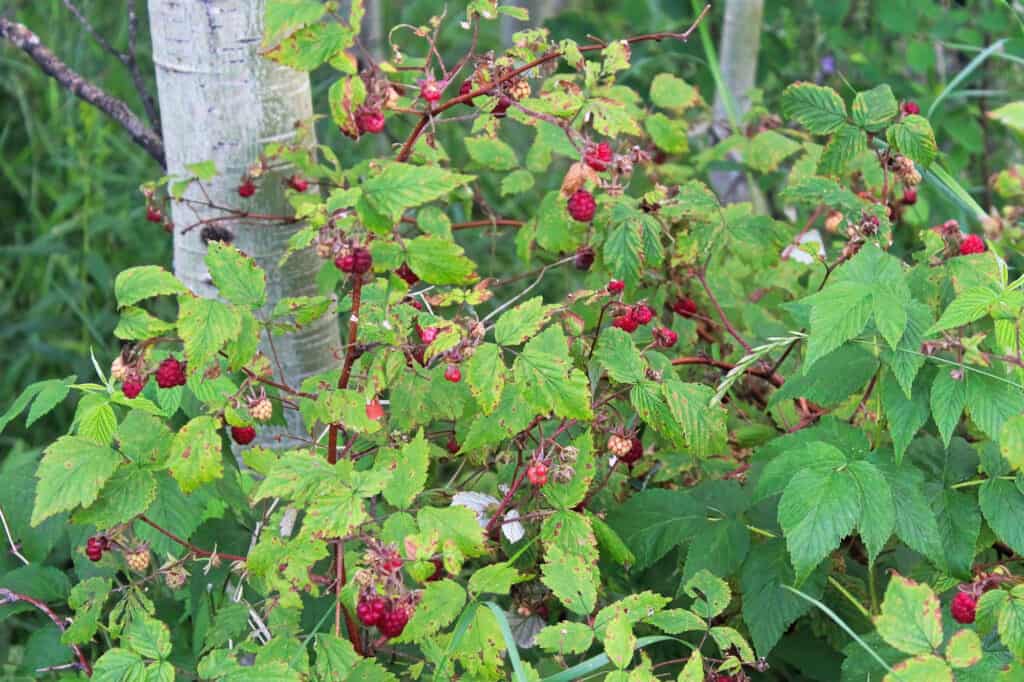
Raspberries are great for container gardens.
©Amelia Martin/Shutterstock.com
For women, raspberry tea is the best kind to drink as it alleviates a lot of menstrual problems.
53. Cornflower

Cornflowers are gorgeous indigo flowers that make any garden pop.
©EQRoy/Shutterstock.com
If you want to live more of the cottage-core life, cornflowers are a must. You can make tea, dye clothes, bake, and use them for self-care products.
54. New Jersey Tea
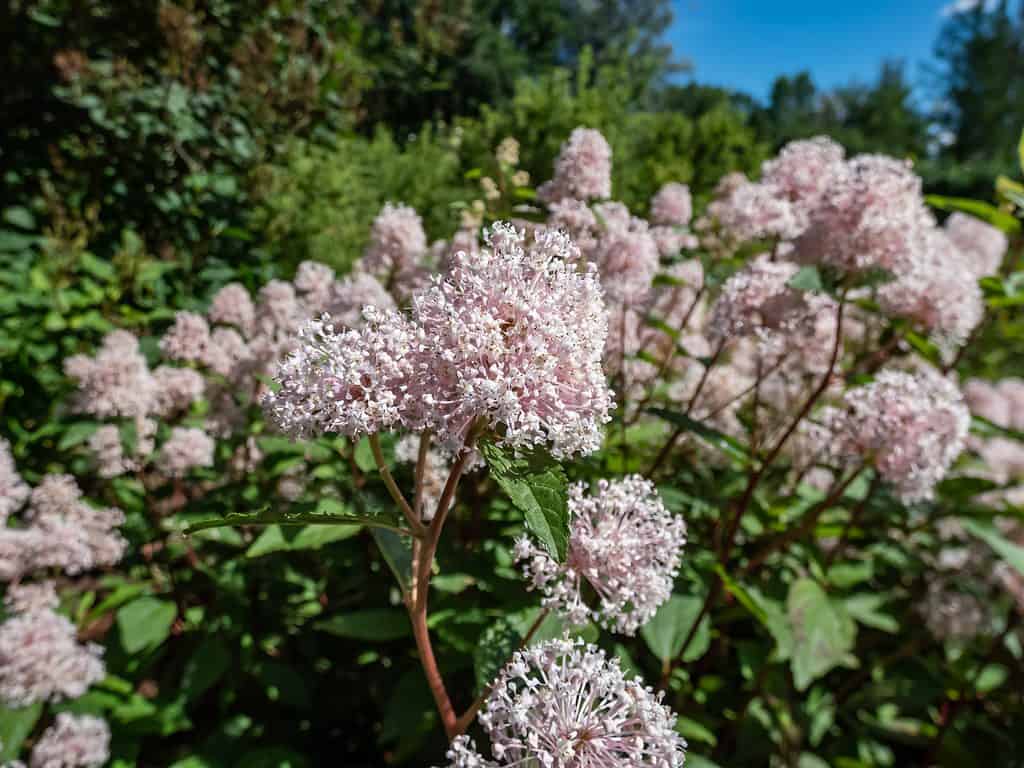
The New Jersey tea’s flowers attract bees and other insects that pollinate them to produce seeds that will grow into new plants.
©Kristine Rad/Shutterstock.com
If you want a love-it-and-leave-it plant that you just need to pluck a few leaves off of every once in a while to make tea, you need the New Jersey tea plant in your garden.
55. Sage

Sage is a soft green-gray plant.
©Muthita Panphloi/iStock via Getty Images
If you enjoy more natural methods for cleaning your home, eat a lot of chicken, or want a smoky and earthy tea to drink, you want some species of sage (or several) in your garden.
56. Calendula
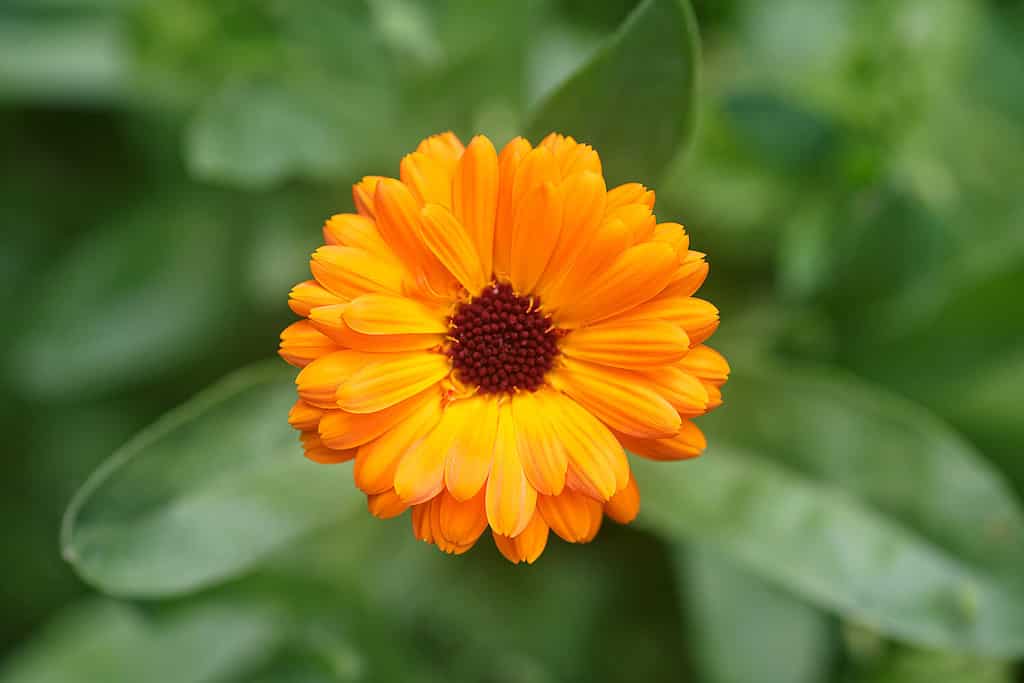
Calendulas have bright orange flowers that stand out against rich greenery.
©domnitsky/Shutterstock.com
Looking for a unique cup of tea? Calendula adds a sweet, spicy, and slightly bitter flavor to every cup.
57. Stevia

The plant above is a naturally sweet plant known as stevia.
©yul38885/Shutterstock.com
Stevia can be used to sweeten any cup of tea if you’re looking for more natural options than sugar. It also adds a hint of a licorice flavor.
58. Rosemary
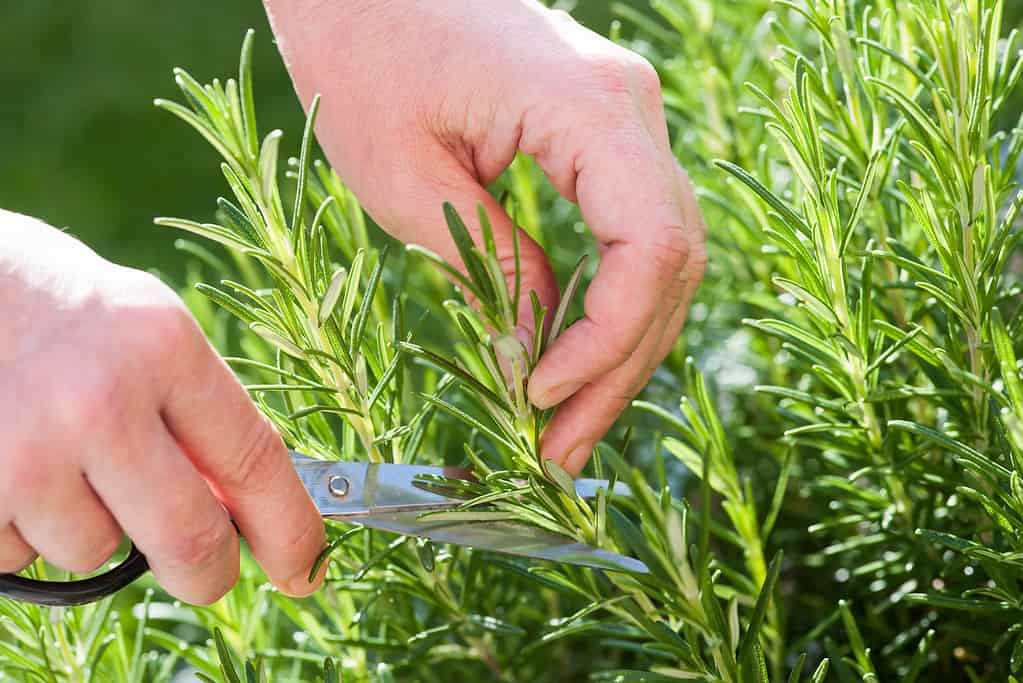
Rosemary has a beautiful smell and works in many savory dishes.
©AlexRaths/ via Getty Images
Have you ever had savory tea? Rosemary tea might be something you’ve never thought to give a try before.
59. Scented Geranium

If you want to move away from standard roses, geraniums are a good replacement.
©Studio Photo MH/Shutterstock.com
Geraniums are beautiful flowers that are very floral and rose-like when used in tea.
60. Sweet Tea Vine
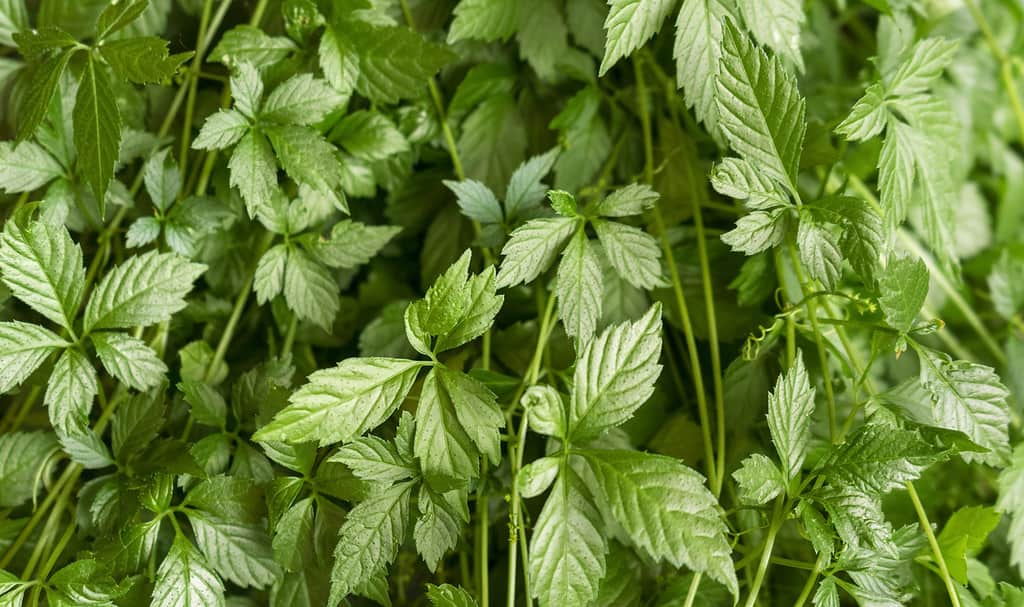
Jiaogulan, or sweet tea vine, has been used in China as a tonic tea for centuries.
©prill/iStock via Getty Images
This plant has a lot of different names, including jiaogulan, sweet tea vine, and southern ginseng. It’s not the tastiest tea, but it has a lot of health benefits.
61. Thyme
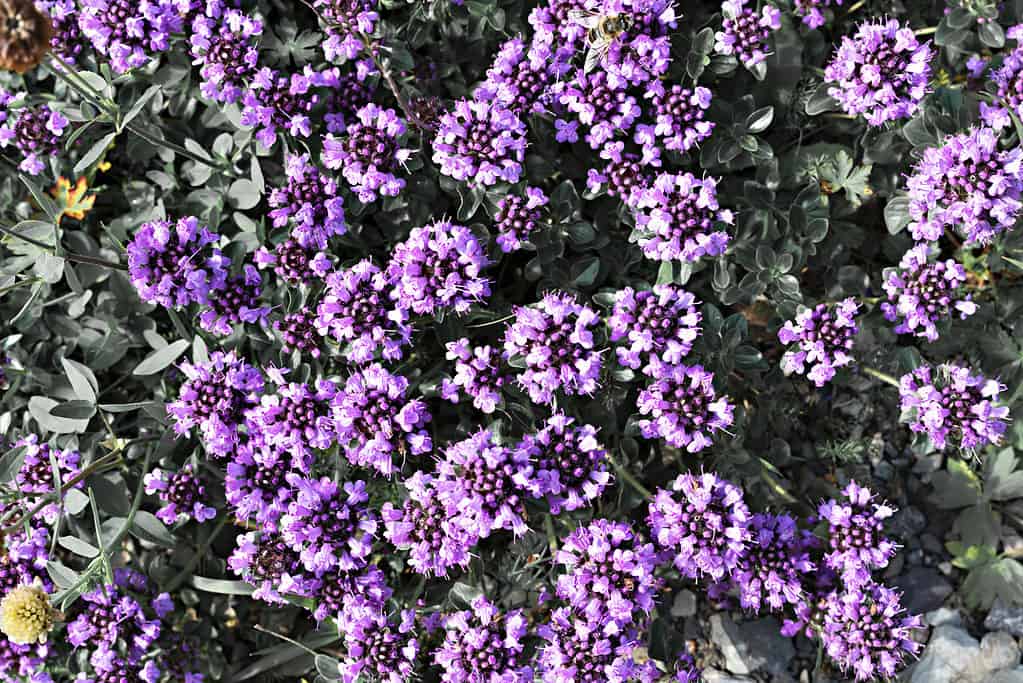
You know thyme as an herb, but did you know it also has beautiful little flowers?
©iStock.com/Elena Goosen
Drinking thyme tea is said to be a restorative drink that makes you feel better, even during colds and the flu.
Summary of the Best Plants to Grow to Make Your Own Tea
| List Order | Plant Name | Scientific Name | Flavor Profile | Health Benefits |
|---|---|---|---|---|
| 1 | Tea Plant | Camellia sinensis | Floral, grassy, sweet, nutty, slightly bitter | Boost immune system, fight off inflammation |
| 2 | Fennel | Strong strawberry flavor, sweet, slightly floral | Sweet, herbal, a little like licorice | Improves digestion, reduces cramps, aids in weight loss, improves sleep |
| 3 | Fenugreek | Trigonella foenum-graecum | Bitter, sweet, hint of maple | Reduces blood pressure, lowers inflammation, stabilizes blood sugar |
| 4 | Cilantro | Coriandrum sativum | Earthy, light, and floral, with little sweetness | Lowers blood pressure, lowers cholesterol, stabilizes blood sugar |
| 5 | Chicory | Cichorium intybus | Earthy, similar to coffee | Reduced stress, improved gut health, reduced inflammation |
| 6 | Dandelion | Taraxacum | Slightly nutty, bitter notes | Reduces water weight, improves liver health, improves digestion |
| 7 | Echinacea | Echinacea purpurea | Very floral, fresh and sweet | Reduces length of colds and flu, improves sore throat, coughs, and fevers |
| 8 | Valerian | Valeriana officinalis | Very herbaceous and earthy | Improves sleep, reduces anxiety |
| 9 | Angelica | Angelica archangelica | Sweet, lightly bitter | Reduces heartburn, alleviates gas, improves appetite |
| 10 | Licorice | Glycyrrhiza glabra | Sweet, similar to fennel or anise but stronger | Calms the mind, improves the nervous system, reduces colds and coughs |
| 11 | Ginger | Zingiber officinale | Spicy and stimulating | Reduces motion sickness and morning sickness, improves blood pressure |
| 12 | Blueberry | Vaccinium | Light, sweet, tart | Improves vision, bone density, digestion, and kidney health |
| 13 | Peach | Prunus persica | Sweet, tangy, ripe peach flavor | Improves the immune system, cardiac health, and weight loss |
| 14 | Apricot | Prunus armeniaca | Fruity, floral | Improves weight loss, boosts metabolism, lowers blood pressure |
| 15 | Mango | Mangifera indica | Tropical, with notes of citrus | Improves vision, strengthens immune system |
| 16 | Lemon | Citrus limon | Fresh, tangy, strong citrus flavor | Improves cholesterol, skin, and heart health |
| 17 | Rose | Rosa | Very floral, slightly astringent | Reduces menstrual cramps, bloating, and aches |
| 18 | Strawberry | Fragaria | Strong strawberry flavor, sweet, slighly floral | Improves brain function, reduces high blood pressure and arthritis |
| 19 | Myrtle | Myrtus | Strong citrus flavor, bright, green | Reduces blood sugar levels, prevents urinary and bladder infections |
| 20 | Blackberry | Rubus fruticosus | Sweet and sour, slightly floral | Improves sore throat, gums, and mouth, and helps with inflammation of the gut |
| 21 | Chamomile | Matricaria chamomilla | Hints of apple and floral notes, sweet like honey | Improves sleep, reduces gut inflammation and fevers |
| 22 | Honeysuckle | Lonicera periclymenum | Smooth and sweet, with a hint of bitterness | Improves bowel movements, detoxifies the body |
| 23 | Jasmine | Jasminum | Delicate, fragrant, and floral | Relaxing, boosts immune system, aids in digestion |
| 24 | Lavender | Lavandula | Floral with hints of rosemary and mint | Improves sleep and menstrual pain, balances the immune system |
| 25 | Saffron | Crocus sativus | Sweet and floral with an earthy hint | Improves memory function, antibacterial and antiviral |
| 26 | Violet | Viola | Tart with hints of fruit and sweetness | Helps with dry or sore throats, coughs, and stuffy noses |
| 27 | Almond | Prunus dulcis | Marzipan-like taste, creamy and sweet | Reduces bad cholesterol and chances of heart disease, reduces hunger |
| 28 | Cardamom | Elettaria cardamomum | Smoky and minty | Diuretic properties, anti-inflammatory, improves IBS |
| 29 | Feverfew | Tanacetum parthenium | Herbaceous with hints of sharp citrus | Helps reduce fevers, migraines, headaches, and arthritis |
| 30 | Hyssop | Hyssopus officinalis | Minty with a slightly bitter aftertaste | Improves digestion, liver, and gallbladder, reduces intestinal pain |
| 31 | Anise | Pimpinella anisum | Mild licorice flavor, smooth and sweet | Improves symptoms of cold and flu, and clears up acne |
| 32 | Lemon Balm | Melissa officinalis | Refreshing, minty, with hints of citrus | Reduces stress and anxiety, improves sleep and appetite |
| 33 | Manuka | Leptospermum scoparium | Woody, slightly spicy | Antibacterial, anti-fungal, antimicrobial, and anti-inflammatory |
| 34 | Bergamot | Citrus bergamia | Hints of citrus, very floral, and hints of grapefruit | Improves digestion, cholesterol, and blood pressure |
| 35 | Nasturtium | Tropaeolum | Peppery, pungent, and smooth | Improves symptoms of cold and flu, ad clears up acne |
| 36 | Clover | Trifolium | Earthy and sweet | Diuretic properties, helps reduce mucus in the lungs and throat |
| 37 | Dahlia | Dahlia | Floral, subtle, and sweet | Prevents constipation, improves weight loss and muscle gain |
| 38 | Catnip | Nepeta cataria | Improves clot factors, acts as a mild sedative | Reduces muscle spasms and improves digestion |
| 39 | Dianthus | Dianthus | Sweet and floral with a hint of cloves | Reduces fevers and stomach pain, clears up mucus |
| 40 | Pine | Pinus | Herbaceous with hints of mint | Great for colds and flu |
| 41 | Juniper | Juniperus | Earthy, similar to pine | Improves digestion, gas, heartburn, bloating, and gastrointestinal infections |
| 42 | Passion Flower | Passiflora | Rich, floral, sweet, and deep | Improves sleep, reduces anxiety, improves menopause symptoms |
| 43. | Basil | Ocimum | Sweet, savory, minty, peppery, and licorice-like | Improves skin, joints, intestines, and lungs |
| 44 | Lemon Verbena | Aloysia citrodora | Refreshing, lemony, and smooth | Reduces weight, stress, and insomnia |
| 45 | Nettle | Urtica | Smooth, mellow, and grassy | Helps to treat gout, muscle aches, and arthritis |
| 46 | Sunflower | Helianthus | Hints of jasmine, floral, light and delicate | Diuretic, astringent, and expectorant properties. |
| 47 | Milk Thistle | Silybum marianum | Mild and sweet | Supports liver, bone, and skin health |
| 48 | Mint | Mentha | Refreshing, sweet, and cool | Aids in digestion, freshens breath, improves energy |
| 49 | Mountain Pepper | Tasmannia lanceolata | Lemony, grassy, and slightly bitter | Helps to improve cardiovascular and autoimmune diseases, Alzheimer’s, and diabetes. |
| 50 | Marjoram | Origanum majorana | Sweet, hints of spice, herbaceous | Improves runny noses, colds, ear pain, and sore throats |
| 51 | Olive Tree | Olea europaea | Slightly tangy and herbaceous | Lowers blood pressure, increases blood flow, reduces blood sugar |
| 52 | Raspberry | Rubus idaeus | Fruity, full body, slightly earthy | Improves digestion, menstrual cramps, water retention, and morning sickness |
| 53 | Cornflower | Centaurea cyanus | Mild and sweet | Improves fever, constipation, congestion, and water retention |
| 54 | New Jersey Tea | Ceanothus americanus | Minty and green | Improves clot factors, acts as mild sedative |
| 55 | Sage | Salvia | Earthy, smoky, sweet | Improves menopause, reduces inflammation, improves brain function |
| 56 | Calendula | Calendula offficinalis | Sweet, bitter, slightly spicy | Fights against heart disease and eases muscle fatigue |
| 57 | Stevia | Stevia rebaudiana | Sweet, bitter, hints of licorice | Reduces stress on the heart, lowers blood pressure, and filters excess sodium in the body |
| 58 | Rosemary | Salvia rosmarinus | Woodsy, sharp, peppery | Improves digestion and brain function, anti-inflammatory |
| 59 | Scented Geranium | Pelargonium graveolens | Very floral, similar to rose | Reduces asthma, arthritis, and inflammation |
| 60 | Sweet Tea Vine | Gynostemma pentaphyllum | Sweet and earthy, similar to green tea or nettles | Reduces stress, improves sleep and heart health |
| 61 | Thyme | Thymus vulgaris | Spicy, distinct, and earthy | Reduces inflammation, improves digestion, assists in weight loss |
Thank you for reading! Have some feedback for us? Contact the AZ Animals editorial team.








